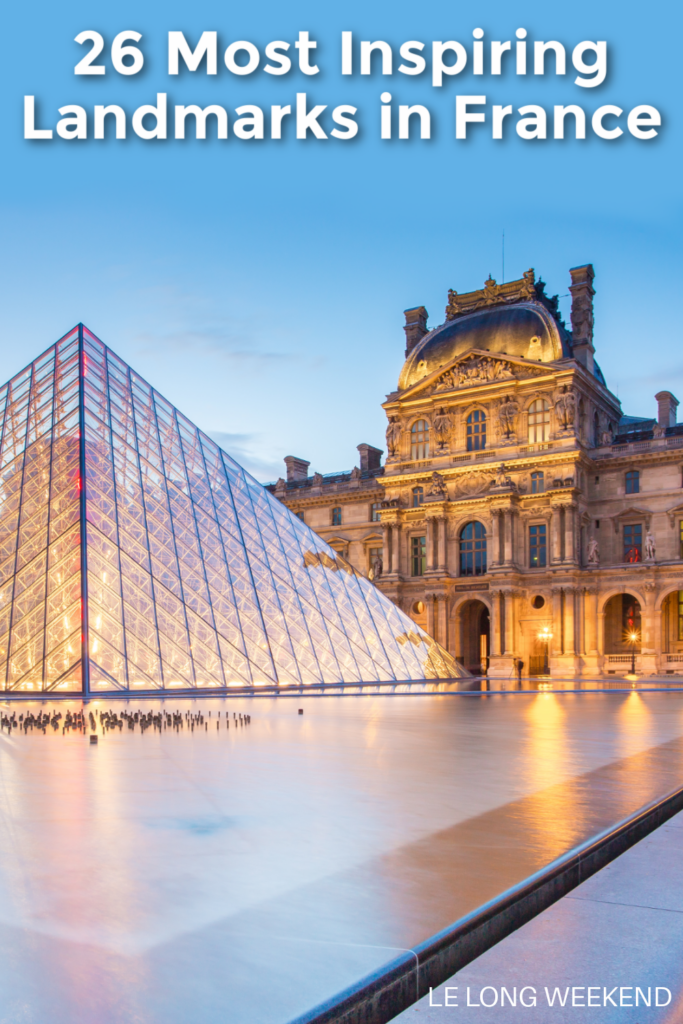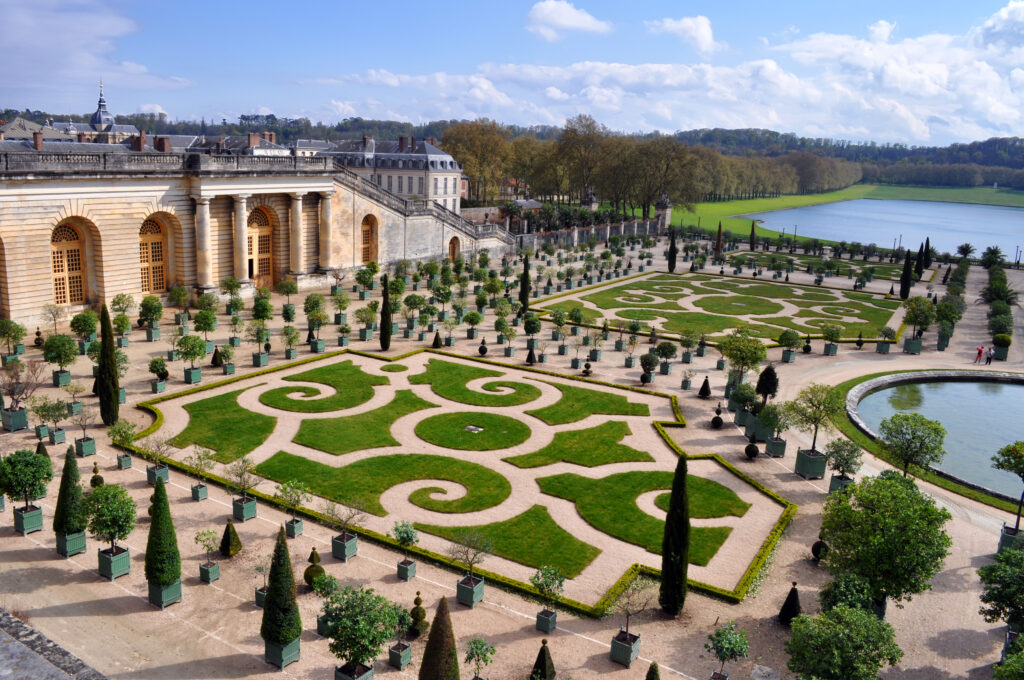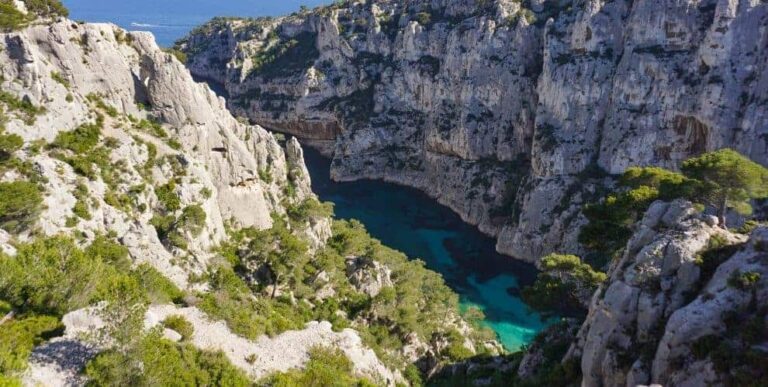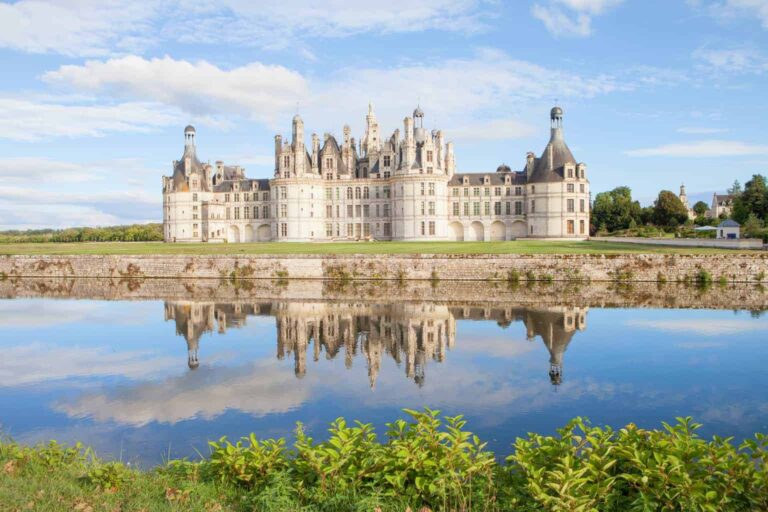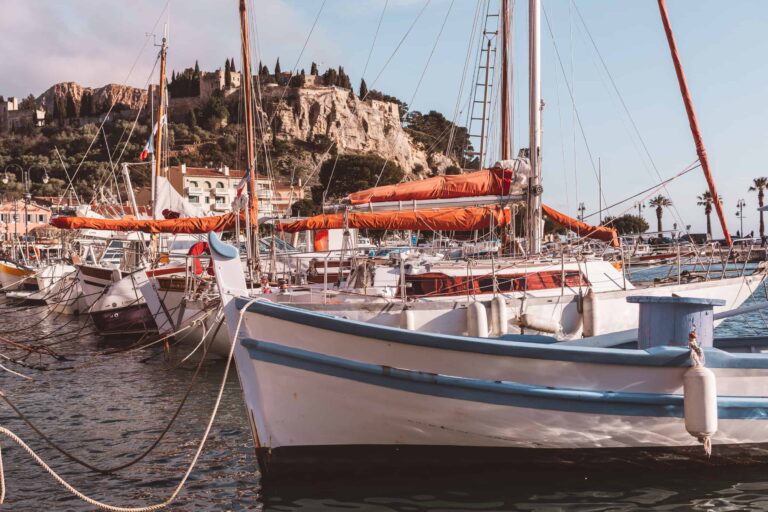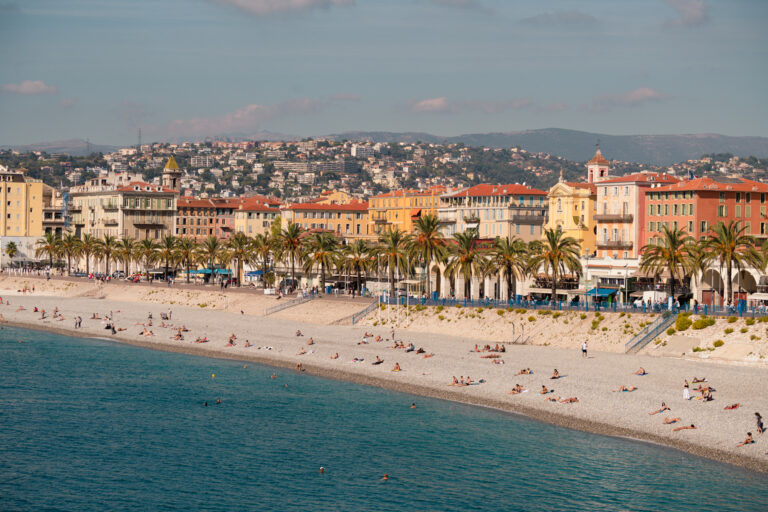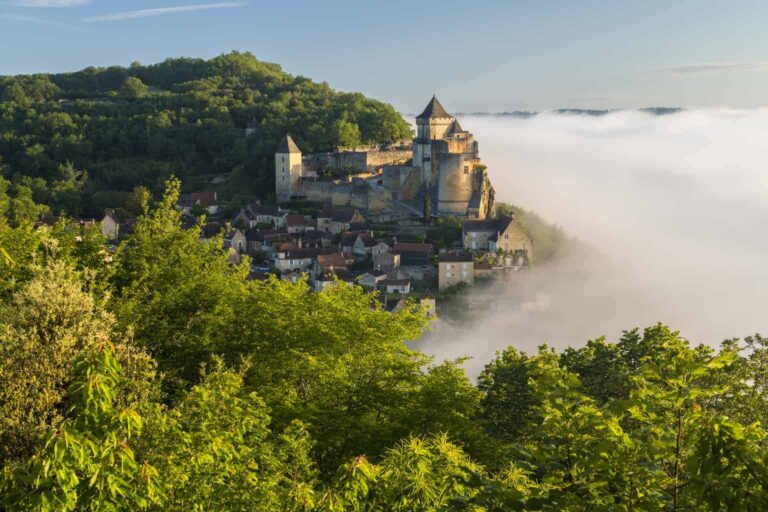Famous Landmarks in France to Visit at Least Once in Your Lifetime
From the Eiffel Tower to Mont-Saint-Michel, France is brimming with incredible historical monuments, architectural wonders, and natural landmarks. In fact, there are so many famous French landmarks across the country it’s difficult to know where to start!
France’s size and diversity means that you’ll find natural and man-made monuments galore, quintessential pieces of French heritage that will help you get under the skin of this fascinating country.
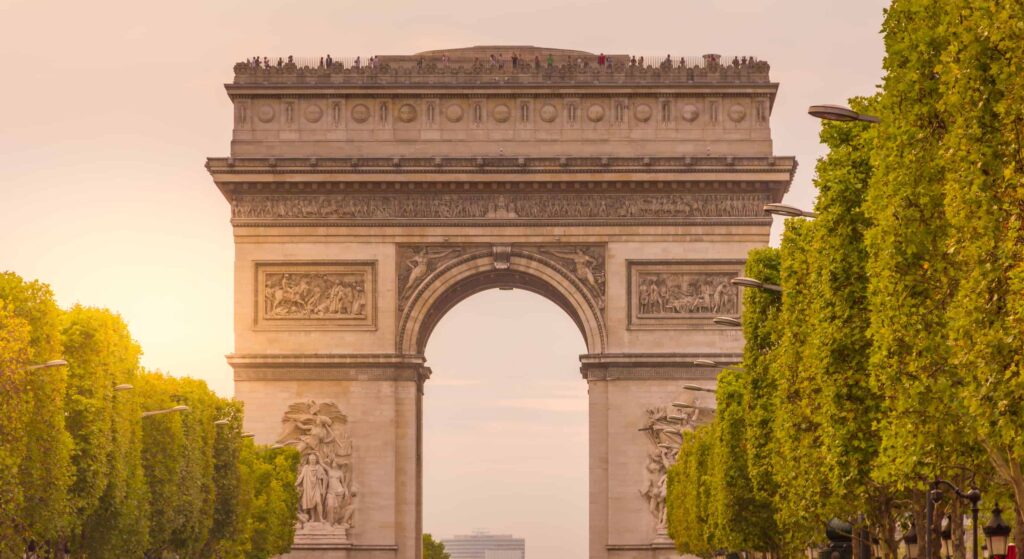
Paris, the beautiful, glittering City of Lights, is a famous French landmark in and of itself. Stuffed with iconic buildings, from gilded palaces to lofty cathedrals, this European capital is instantly recognised by the silhouette of the Eiffel Tower, or the elegant buttresses of Notre Dame. However, tear yourself away from the metropolis, and a whole host of other famous French places await you across the country.
With natural gorges and eerie caverns, fairytale castles and ancient standing stones, and gravity-defying feats of Roman engineering, France’s famous landmarks will take your breath away.
Table of Contents
Map of Must-See French Landmarks
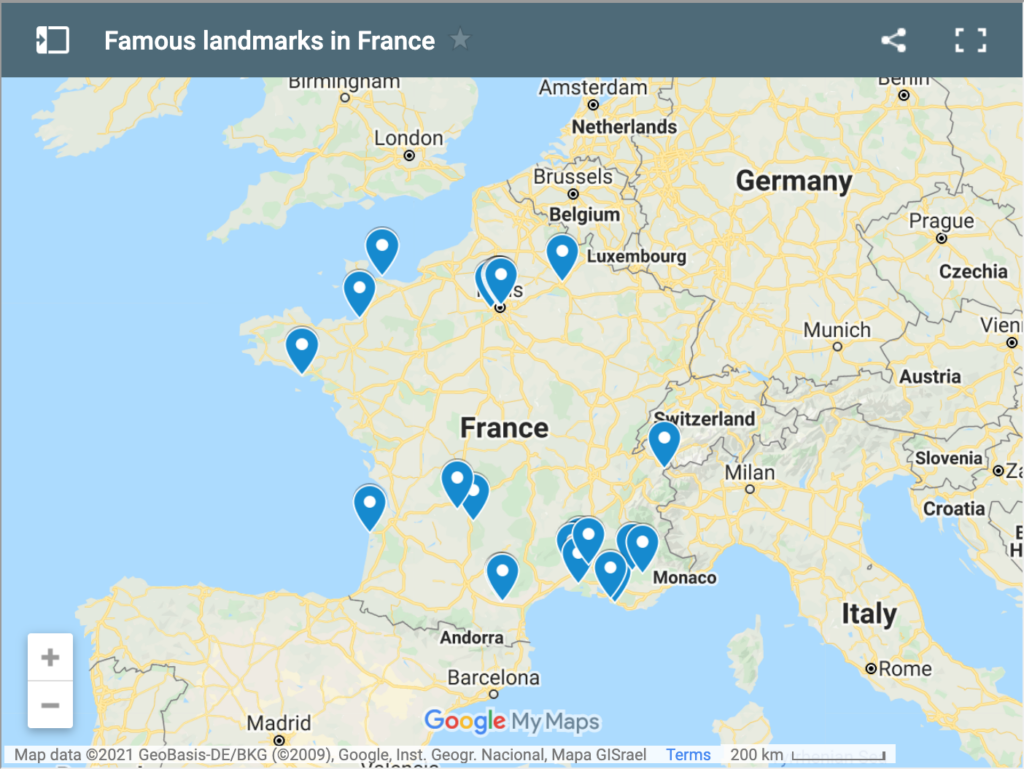
THE EIFFEL TOWER – PARIS
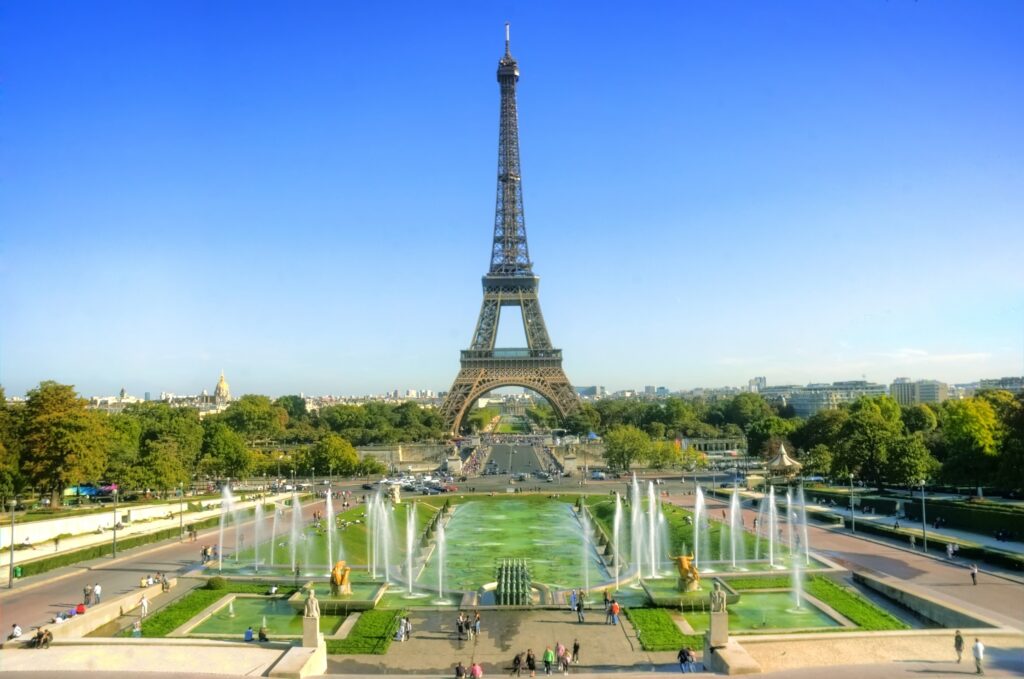
If we’re talking famous landmarks in France, the Eiffel Tower is sure to top just about any list. Known across the world as an iconic symbol of the French capital, a visit to the ‘Iron Lady’ is a must on any trip to Paris.
The tower was originally built for the 1889 World’s Fair and named for its ground-breaking architect, Gustave Eiffel. Standing at an impressive 324m, it was once the tallest man-made structure in the world, the envy of cities the world over until New York’s Chrysler building stole the crown in 1930. However, the Eiffel Tower wasn’t always a hit with Parisians – there were so many objections to its ‘ugly’ shape and design that it was almost torn down in 1909!
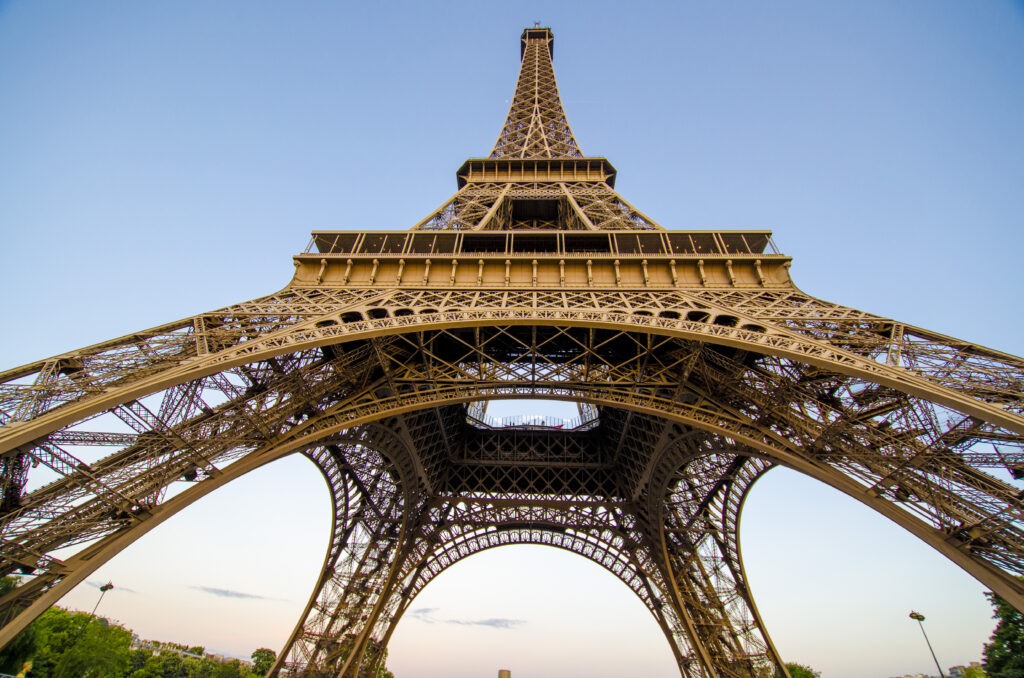
Today, it’s impossible to imagine the Paris skyline without this famous European landmark. Despite the touts, tourists, and long queues, the Eiffel Tower is well worth a visit, offering unparalleled views over the city. Visit at night to see the Iron Lady dressed up in shimmering lights, and enjoy a romantic meal or a glass of champagne in one of its restaurants.
PONT DU GARD – OCCITANIE
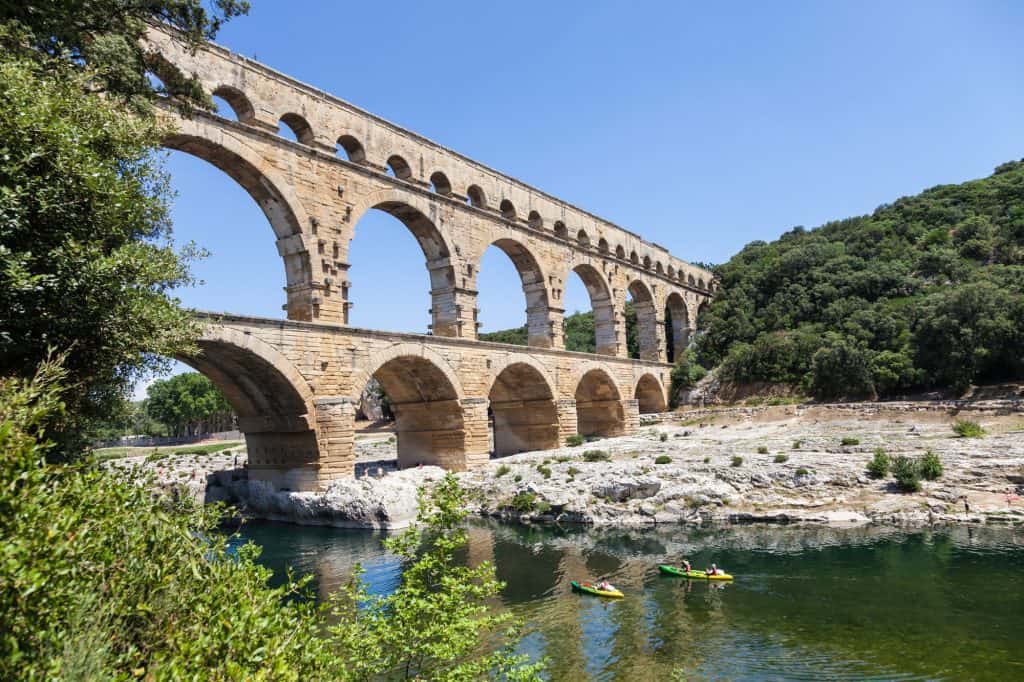
The Pont du Gard is a stunning testimony to Roman engineering, a towering aqueduct that spans the river Gardon, forming part of an ancient, 50km network formerly used to transport water from Uzès to Nîmes.
Engineered with fine precision, this impressive French landmark is a reminder of the region’s rich ancient past. You’ll find epic Roman monuments littered across the south of France, but the Pont du Gard is arguably the finest.
Visiting the Pont du Gard today, the staggering achievements of Roman technology are easy to see. Rising almost 50 metres high, and made up of 42 differently sized arches over three tiers, the bridge itself weighs almost 50,000 tonnes.
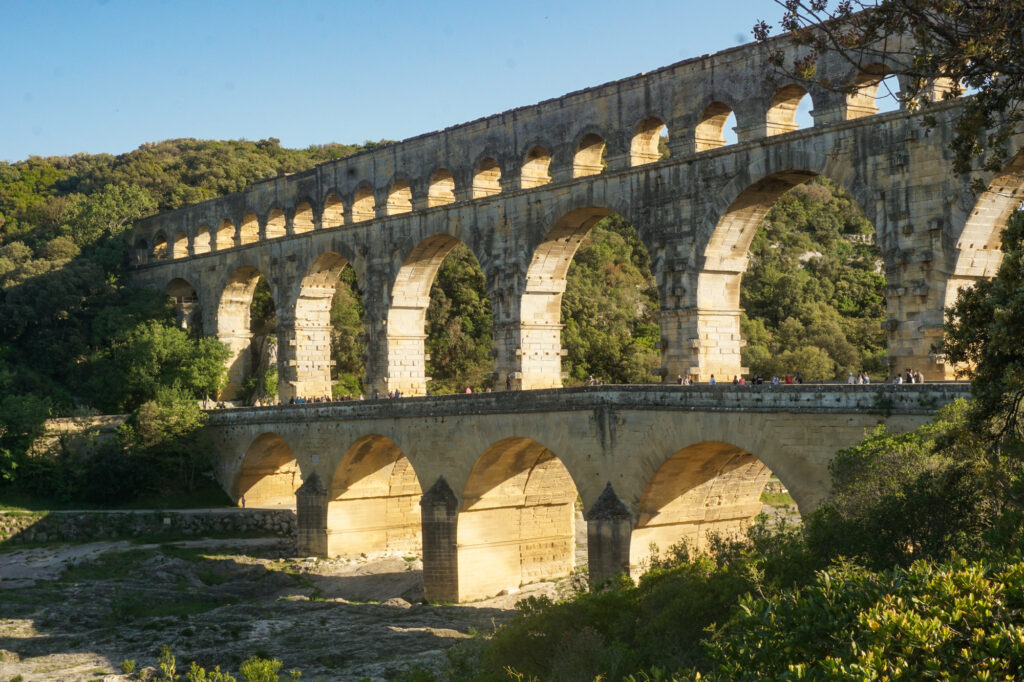
Over 1000 Roman craftsmen worked on the aqueduct, hauling each immense 5-tonne block of stone into place, and fitting them together in a delicate process that required almost no mortar.
It’s possible to walk in their footsteps along the top tier of the aqueduct, and admire the magnificent views over the river and wooded hills. The excellent museum and visitor centre is great for kids and provides a fascinating introduction to France’s ancient history. A must-do on your South of France itinerary.
CARCASSONNE – OCCITANIE
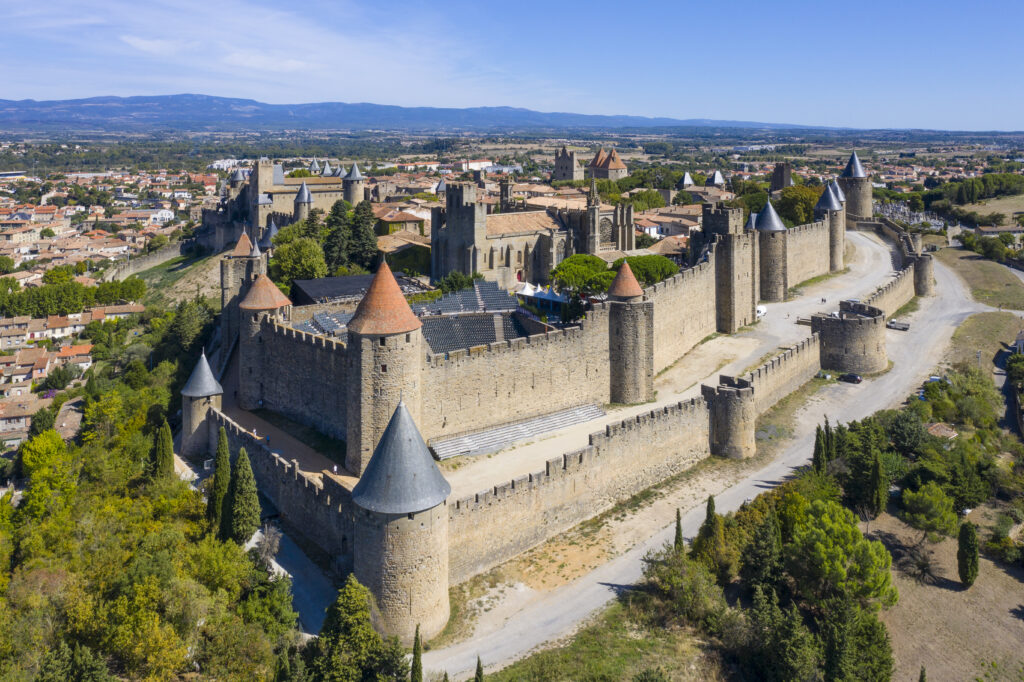
Deep in the heart of Cathar country in the southwest of France stands the colossal citadel that makes up the medieval Cité of Carcassonne. Set high on a rocky outcrop, with imposing stone walls and romantic watchtowers, the castle is one of the best-preserved medieval fortresses in the country. As you wander the paved streets and explore the labyrinthine alleyways, you’ll feel as though you’ve been transported back in time.
Carcassonne’s impenetrable fortifications date from the 13th century, when the town became a flashpoint in the bitter conflict known as the Albigensian Crusade. Intent on rooting out heretical practices in the southwest, papal and royal forces took Carcassonne and made it their headquarters in the fight against the Cathars, a local group of ascetics. However, there are many more layers of history to uncover here, with traces of Neolithic, Visigothic, and Islamic civilisations.
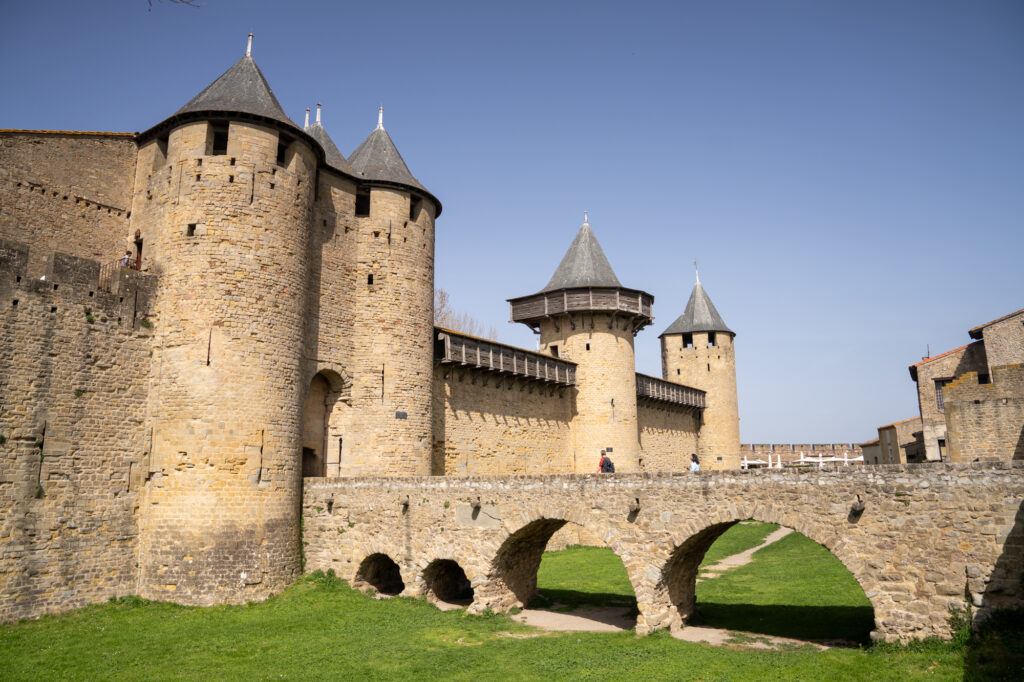
The town is packed with sights that will delight visitors, young and old – just try to avoid visiting in the peak summer months, when the hordes of tourists can sometimes detract from the romance and beauty of this famous French monument.
CALANQUES NATIONAL PARK – PROVENCE
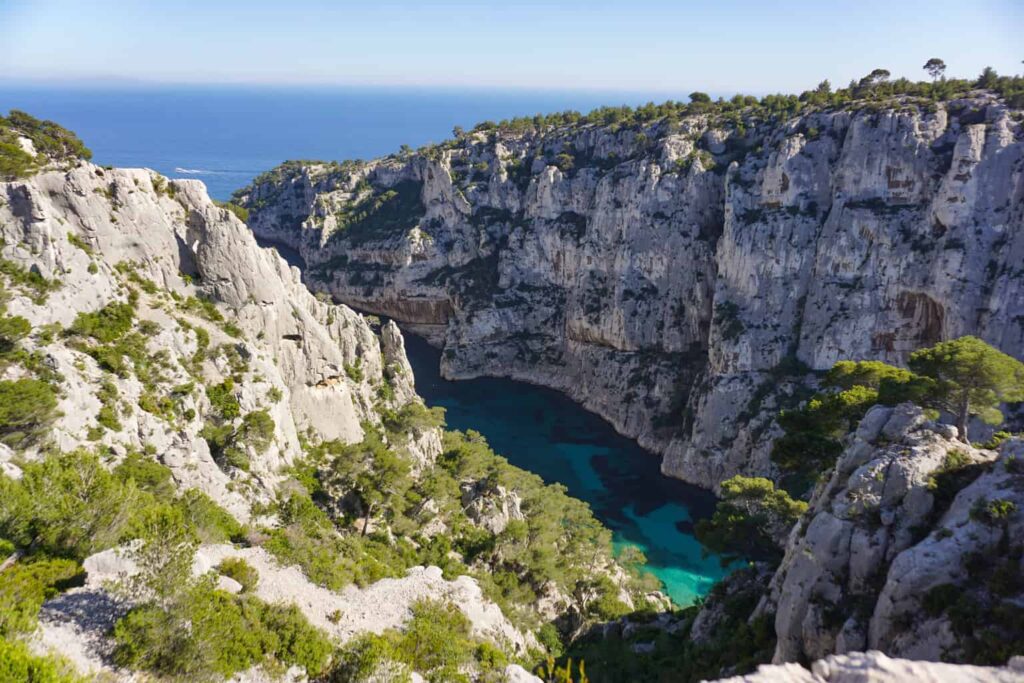
One of the most incredible natural landmarks in France, the Calanques National Park is an area that encompasses natural, urban, and marine habitats in Southern France. Located between the vibrant city of Marseille and the fishing village of Cassis, it’s a popular place for hiking, swimming, biking and watersports.
But the standout attraction in this national park is the calanques themselves. Steep-walled natural inlets that cut into the coast at dramatic angles. The deepest and steepest calanque is that of Calanque d’En Vau which culminates in one of France’s most beautiful beaches. Perfectly cocooned between steep craggy cliffs, it’s a sight well worth the 2hr hike to reach it.
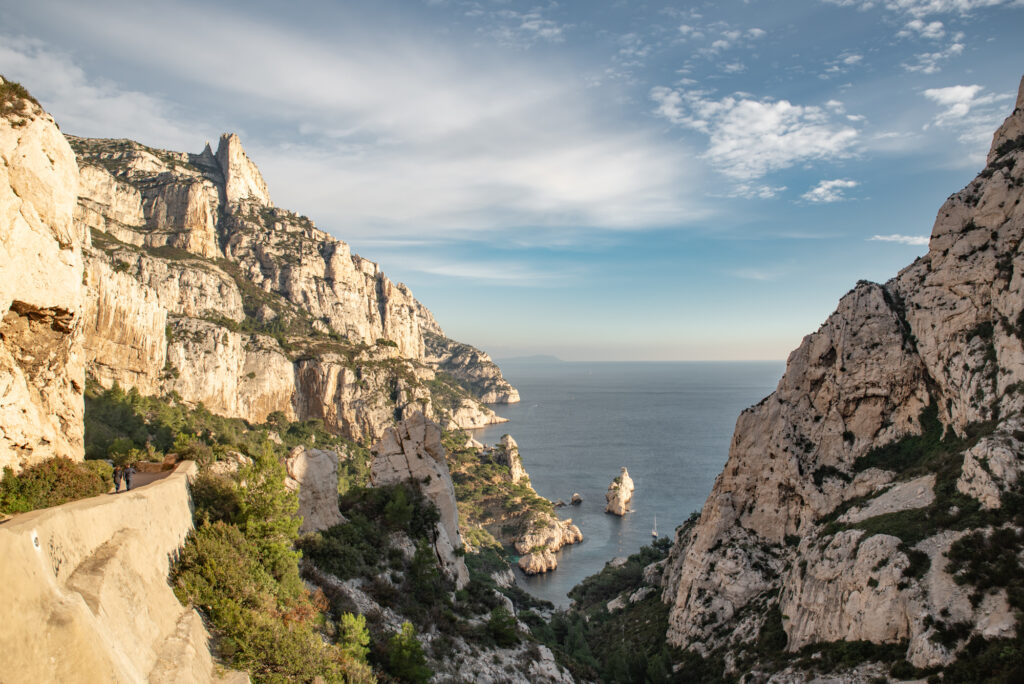
Those wanting a more tame walk to a wider sandy beach can head to the wild Calanque de Marseilleveyre, or the family-friendly Calanque de Sormiou (which you can drive to if you make a reservation at the restaurant at the beach).
The best time to visit is in the Spring when wildflowers abound, or in the Autumn when the risk of wildfires has abated. In the summer months, it can be a better idea to enjoy the area via the sea.
OMAHA BEACH – NORMANDY
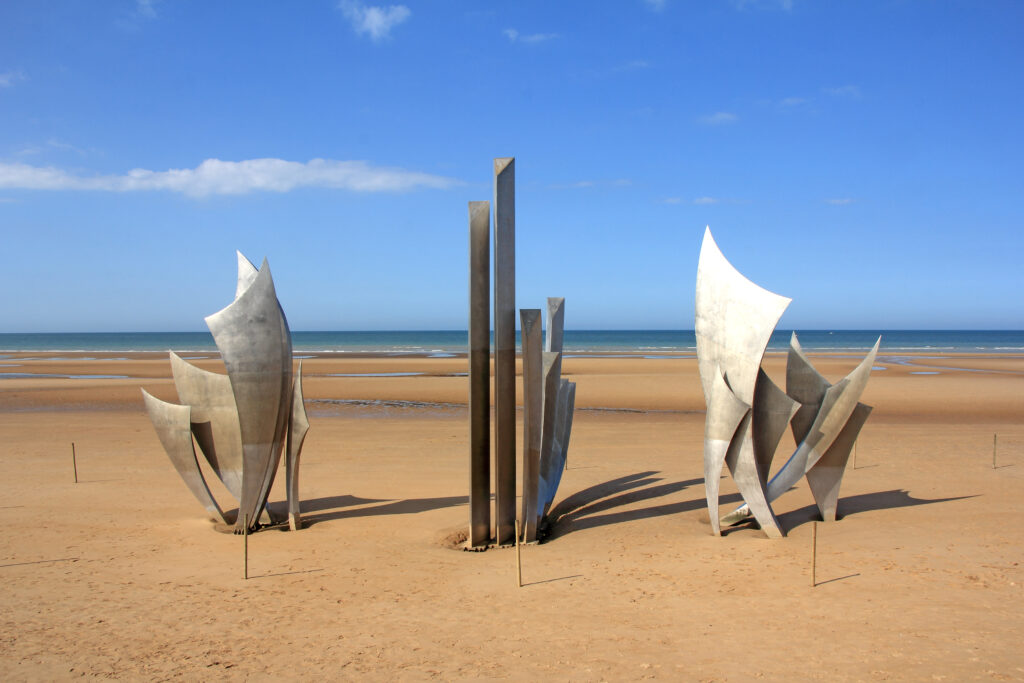
The D-Day landings on the beaches of Normandy are etched into European memory – a daring, bloody invasion that claimed thousands of lives and marked the beginning of the end of the Second World War.
Today, the expansive, sandy beaches of the Normandy coast bear silent witness to this cataclysmic event, and attract visitors from all over the world who wish to pay their respects to the fallen soldiers.
Of all the Normandy beaches, the best place to start your visit is Omaha Beach. This was the focus of the American advance, and today is home to an excellent memorial museum.

Walk along the beach until you reach the Normandy American Cemetery, a sea of white crosses that form a moving tribute to the Americans who lost their lives in the campaign. This is, quite rightly, one of the most famous sights in France, and remains a poignant natural monument to a dark period in the history of the continent.
PALACE OF VERSAILLES – PARIS AREA
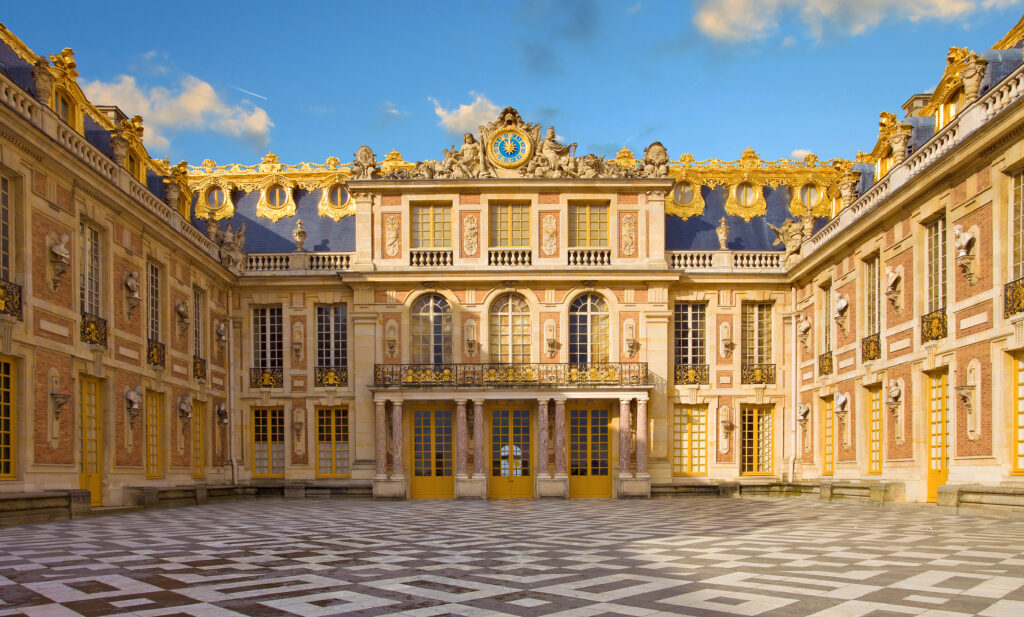
The glittering palace of Versailles is one of the most stunning landmarks of France, and regularly tops the list when it comes to famous French architecture. With its gilded décor, lavish marble monuments, and expansive pleasure gardens, this is one of the most famous buildings of France, that really lives up to the hype.
Once a royal hunting lodge, the palace was transformed into a home fit for the grandeur of the French monarchy under the Sun King, Louis XIV. Wander through the dazzling Hall of Mirrors, peek at the King’s royal bedchamber, and marvel at the intricate fountains that adorn and irrigate the gardens.
MONT-SAINT-MICHEL – NORMANDY
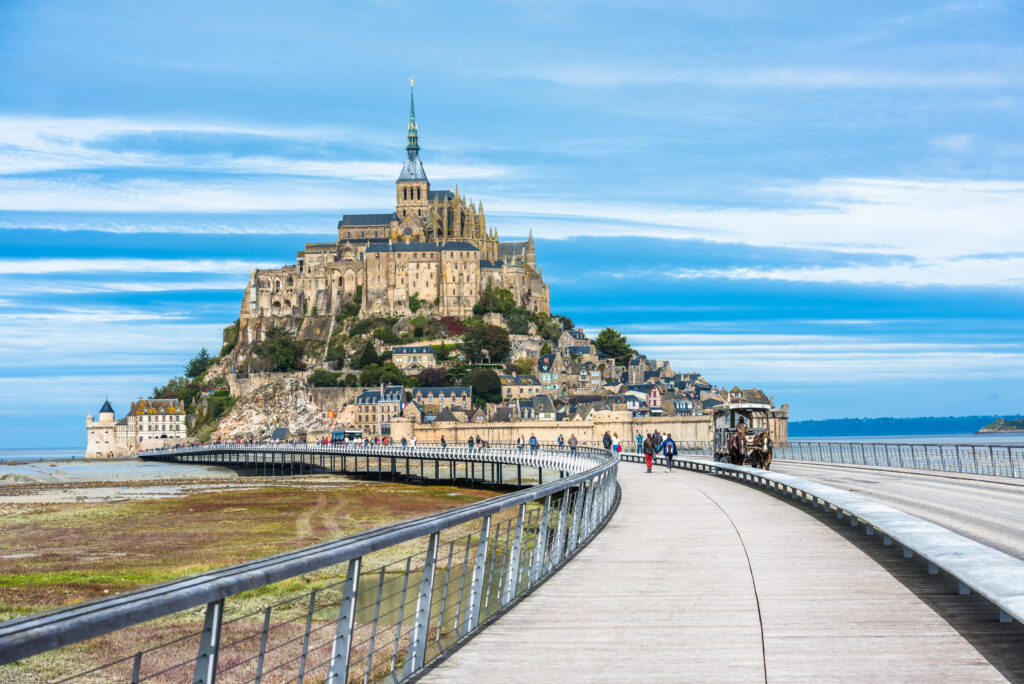
Of all the famous landmarks in France, the dreamy, ethereal monastery of Mont-Saint-Michel is perhaps the most magical. Perched on a rocky outcrop and surrounded by the sea, Mont-Saint-Michel is at its best on cloudy mornings, when the rising mists clothe the monastery in mystery, creating fabulous photo opportunities.
The Gothic abbey that tops the mound today dates from the 13th century, but this miniature hill has been a holy place for thousands of years. Once a sacred shrine for Celtic and later Roman worship, the Christian monastery was founded in the 8th century, when the local bishop received a vision from the Archangel Michael.
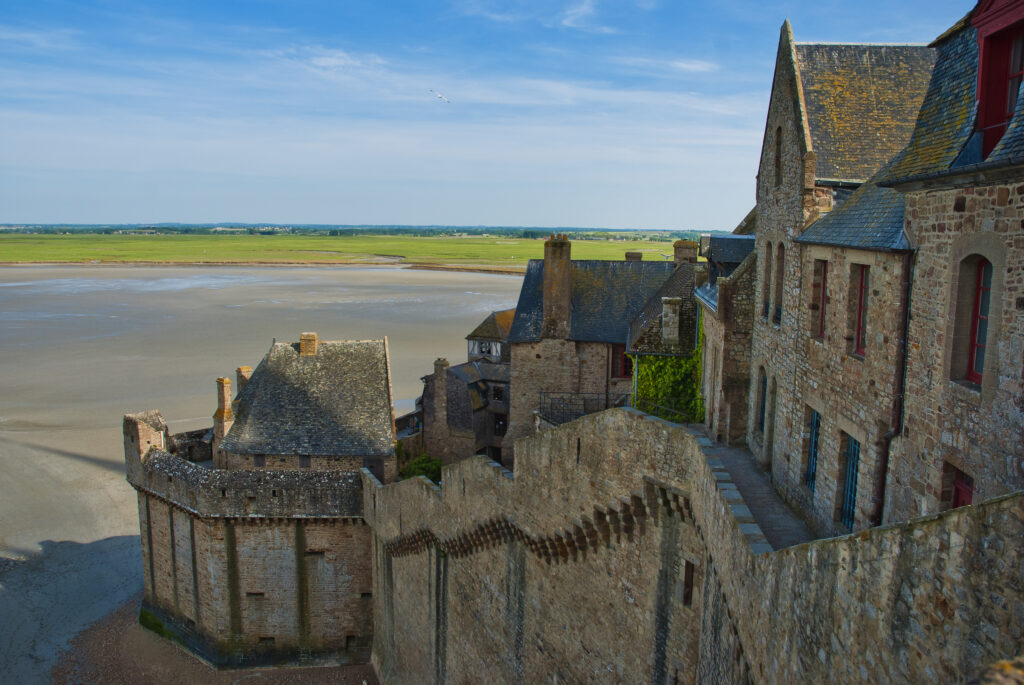
Caught up in the wars between England and France in the Middle Ages, the monks continued to fortify the walls of the monastery, creating a lavish church citadel that still stands today.
This beautiful spot is the second most-visited place in France, and it’s not difficult to see why – this iconic symbol of France’s medieval past is a feast for the eyes.
LAVENDER FIELDS OF PROVENCE
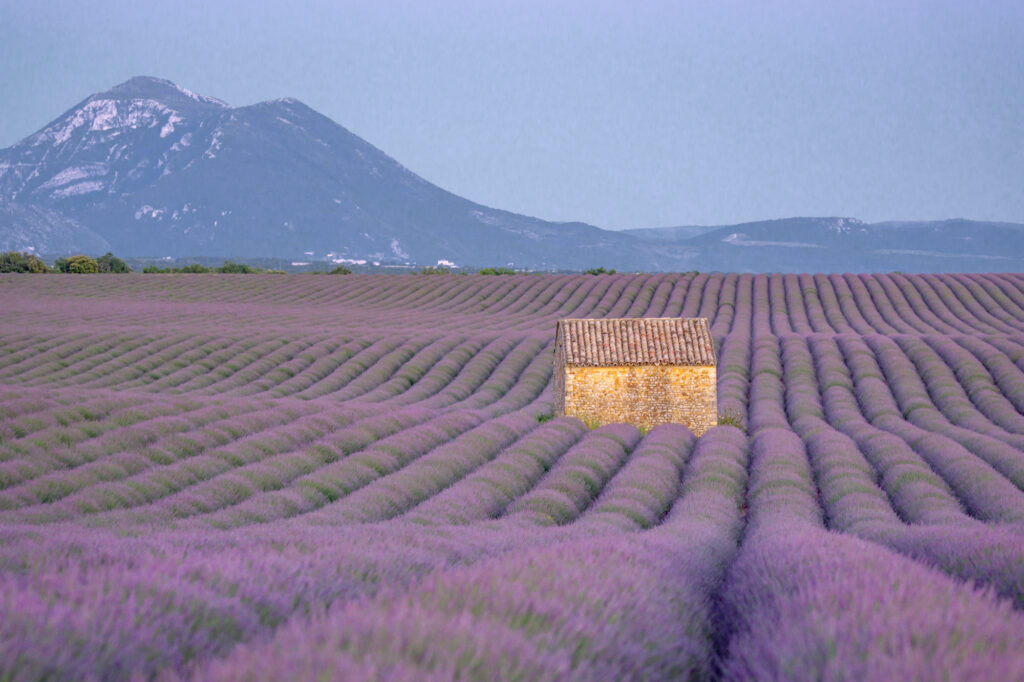
There are few more iconic sights of France than that of the lavender fields in Provence. Come summertime, the landscapes in this part of France are swathed in purple, as the crop blooms for a few short weeks.
France’s lavender was imported by the Romans who used the essential oils to scent their baths and took advantage of the plant’s medicinal properties to heal wounds and fight off infection. Later, in the medieval period, women known as lavenders, would lay freshly washed clothes to dry on lavender bushes.
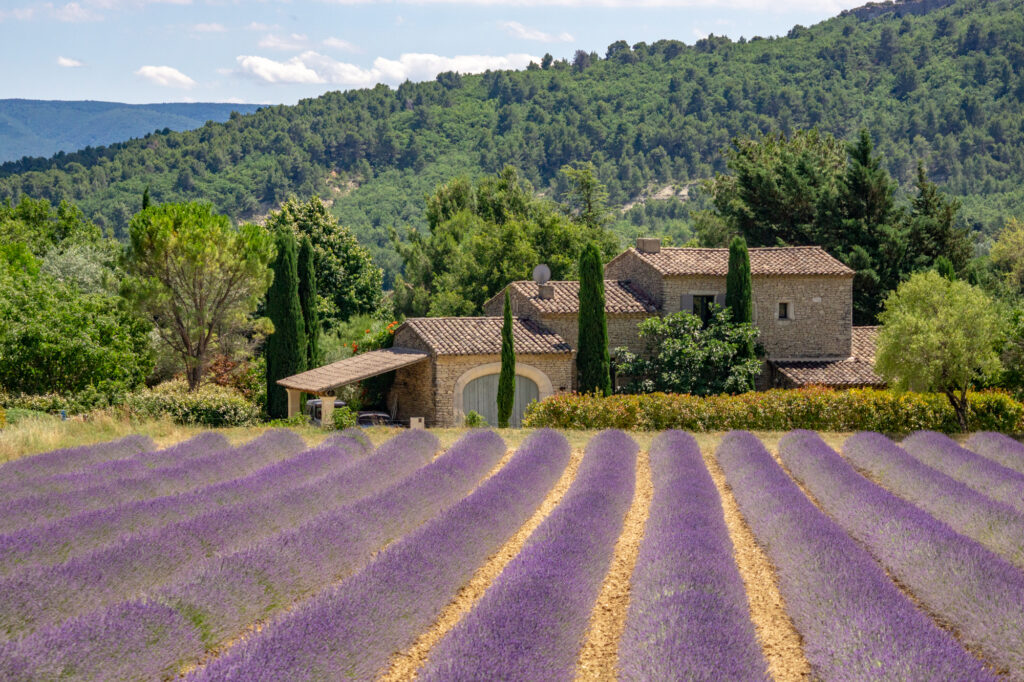
These days lavender is still grown for its essential oils, with lavandin used for its strong perfume, and the finer true lavender for its healing qualities.
The Valensole plateau is the most famous place to find a concentration of expansive lavender farms, followed by the more boutique-sized fields in the Luberon, and the fine lavender fields found in Sault. The lavender season starts in late June and continues through to when it’s harvested in mid-July, except at the higher altitudes, where you can find it flowering well into August.
DUNE DU PILAT – GIRONDE

Rising up from the Atlantic coast, southwest of Bordeaux, the immense Dune du Pilat is a breath-taking natural monument. Half a kilometre wide and three kilometres long, the dune is the largest of its kind in Europe and a popular destination for tourists and locals alike.
Visitors come here to scramble up the soft sand and admire the view 100m up from the sea, and then descend at full pelt or on a bodyboard for a real adrenaline kick! It’s also a popular spot for paragliders, who take advantage of the windy conditions and soft landing spots.
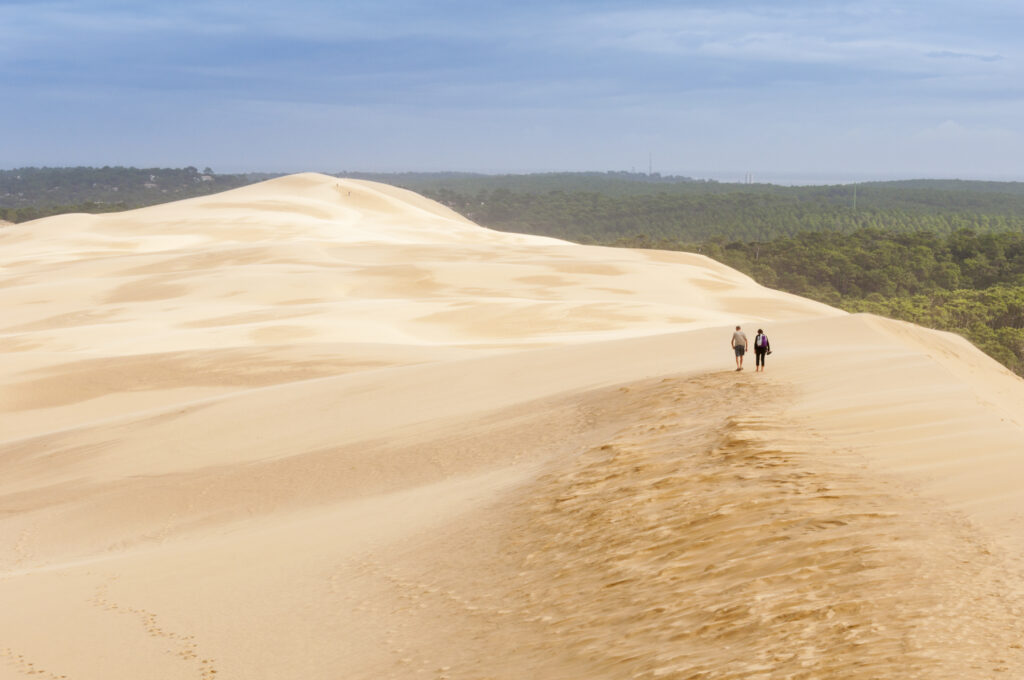
One of the most fascinating things about the Dune du Pilat is the fact that it is still moving. The dune shifts up to 5m per year, driven by the powerful Atlantic winds further and further inland. The site is also an important conservation area, surrounded by scented pine forests and the Banc d’Arquin nature reserve.
Come in the early evening to watch porpoises and bottlenose dolphins playing in the water, and admire a dazzling sunset from the sandy peak.
ROCAMADOUR – LOT
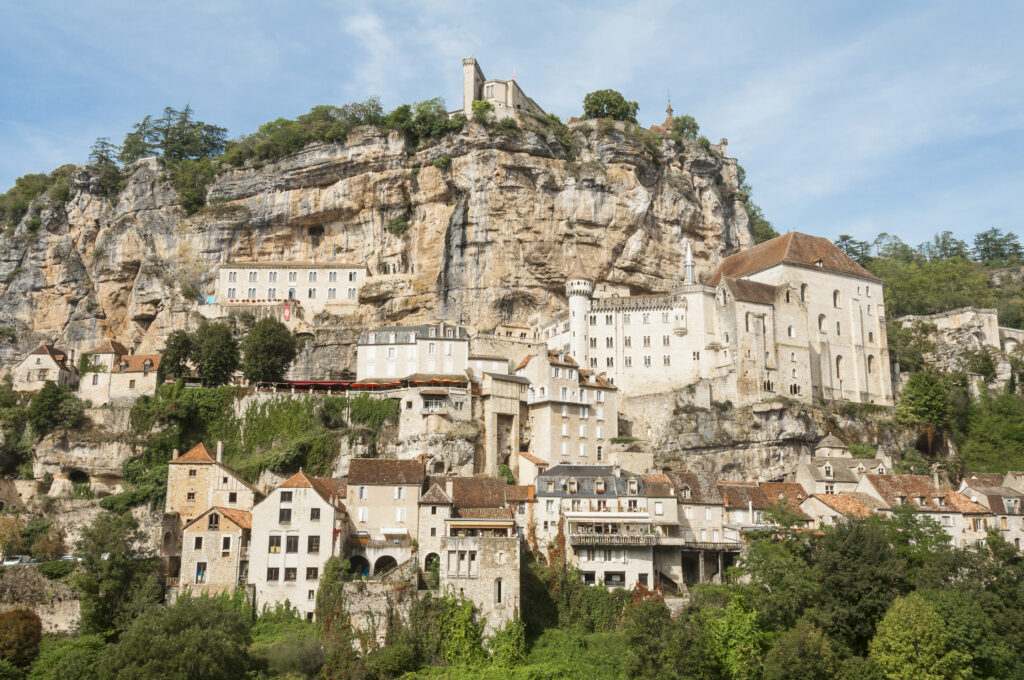
Perched on a vertiginous cliff overlooking a green valley, the medieval town of Rocamadour is one of France’s most captivating landmarks. A fixture on French pilgrimage routes for centuries, Rocamadour’s steep cobbled streets, beautiful stone houses and important religious shrines attract visitors from all over the world.
The most famous attraction here is the Black Madonna, a stunning representation of the Virgin Mary in black wood, known as the scourge of thieves and the protector of sailors. An ancient bell hangs in the Black Madonna’s chapel, and it is said to ring whenever she saves the life of an endangered mariner.
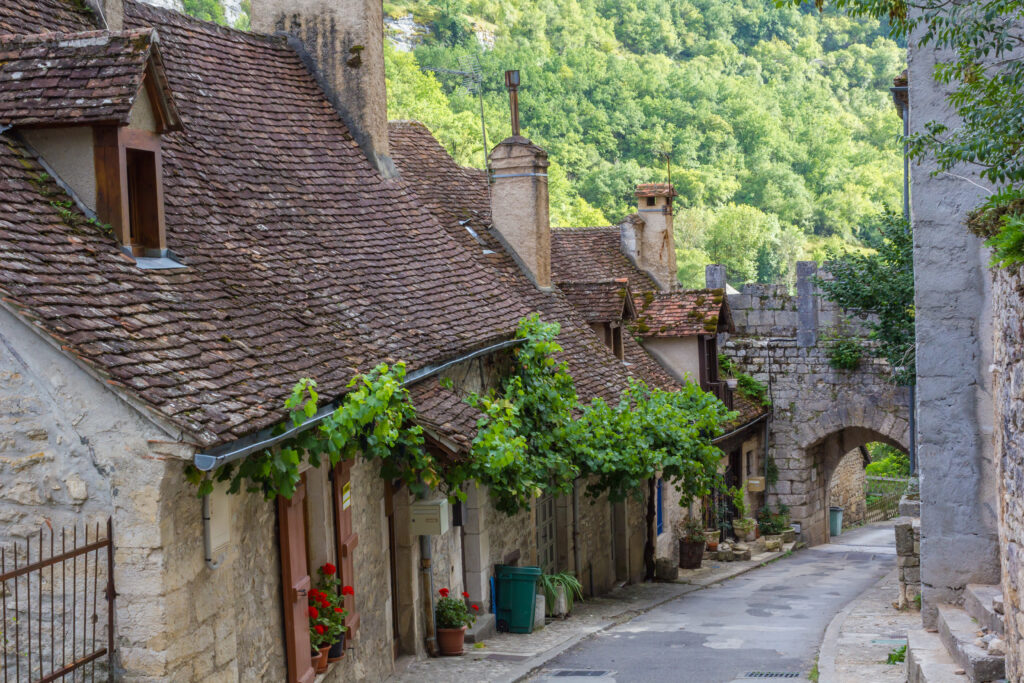
What’s more, Rocamadour is also the resting place of the relics of Saint Amadour, who reputedly protected the infant Jesus when the Holy Family fled to Egypt.
This stunning medieval village is infused with a deep sense of spirituality and is a wonderful, atmospheric place to spend the day. Watch out for the birds of prey soaring over the church, and while away the hours wandering through the charming streets.
Read More: Visiting Rocamaour, France
MUCEM – MARSEILLE
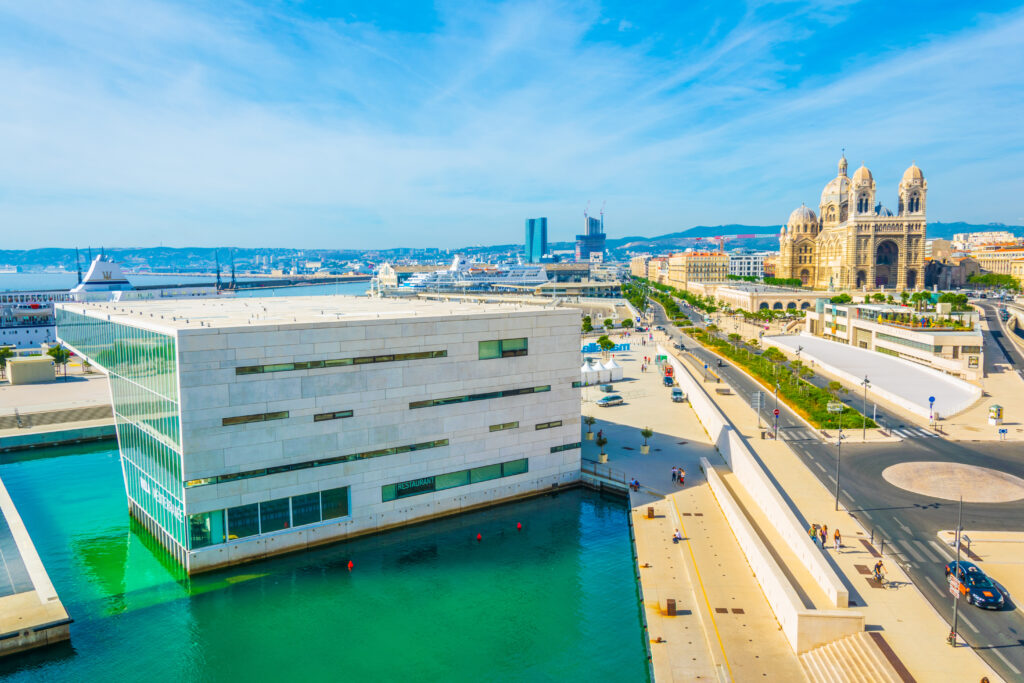
MuCEM (Museum of European and Mediterranean Civilisations) was built as part of Marseille’s regeneration – a project that started back in 1995 in a bid to modernise the central business district and give the port area a more upmarket feel.
Opened in 2013, it has become a prominent landmark in the city. An architecturally interesting building that features concrete lacework, mirrored walls, large light-filled spaces, and incredible views of Fort Saint Jean, the sea, and beyond.
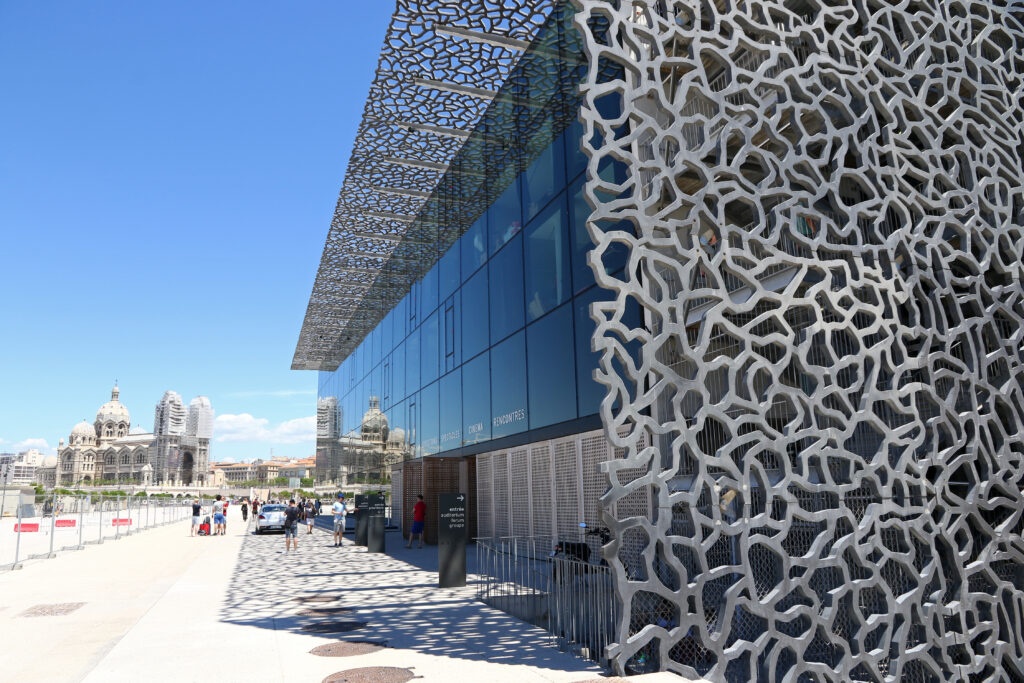
Inside, you’ll find both permanent and temporary exhibitions covering everything from archaeology to sports, spread out over three expansive areas.
It’s a fun and interesting place to visit, even with kids in tow, and they regularly hold events, pop up stores, DJs, and workshops. And this being France, you know you’ll be well fed at the two onsite restaurants, Le Môle and La Table – both the brainchild of chef Gérald Passedat, a local Michelin-starred chef.
Read More: Best things to do in Marseille
THE LOUVRE – PARIS
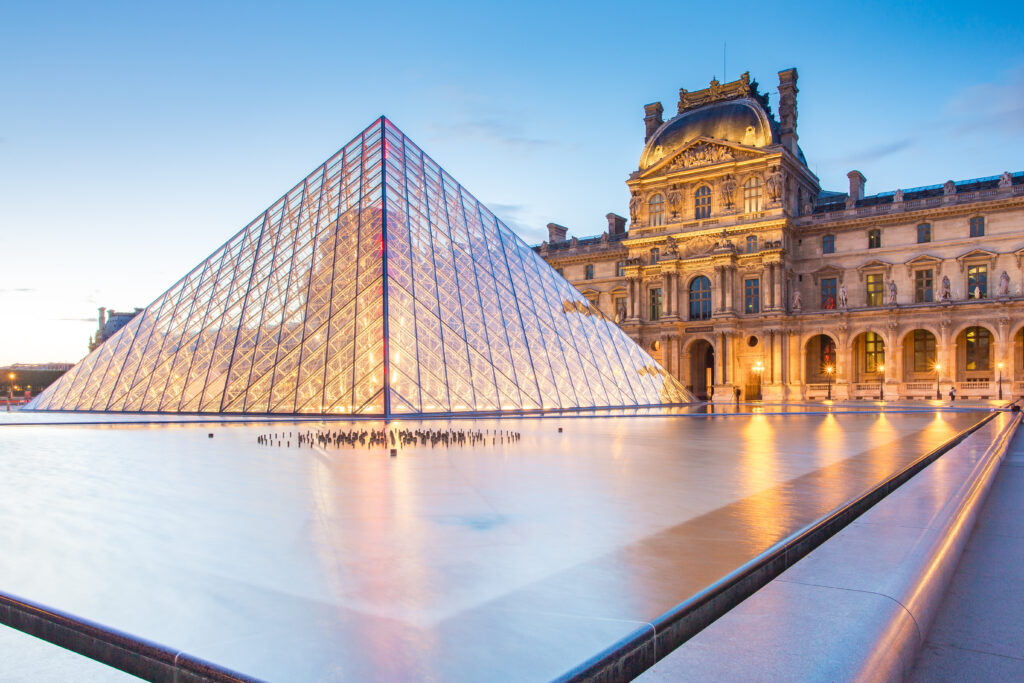
As the world’s most-visited museum, the Louvre is an iconic symbol of Paris and one of the most famous cultural landmarks in France. The shining pyramids that mark the entrance to the museum were a controversial design choice when they were first unveiled in 1988, but today it’s difficult to imagine Paris without them. What’s more, beneath this striking piece of modern architecture lies a world-class collection of some of the finest artworks in history.
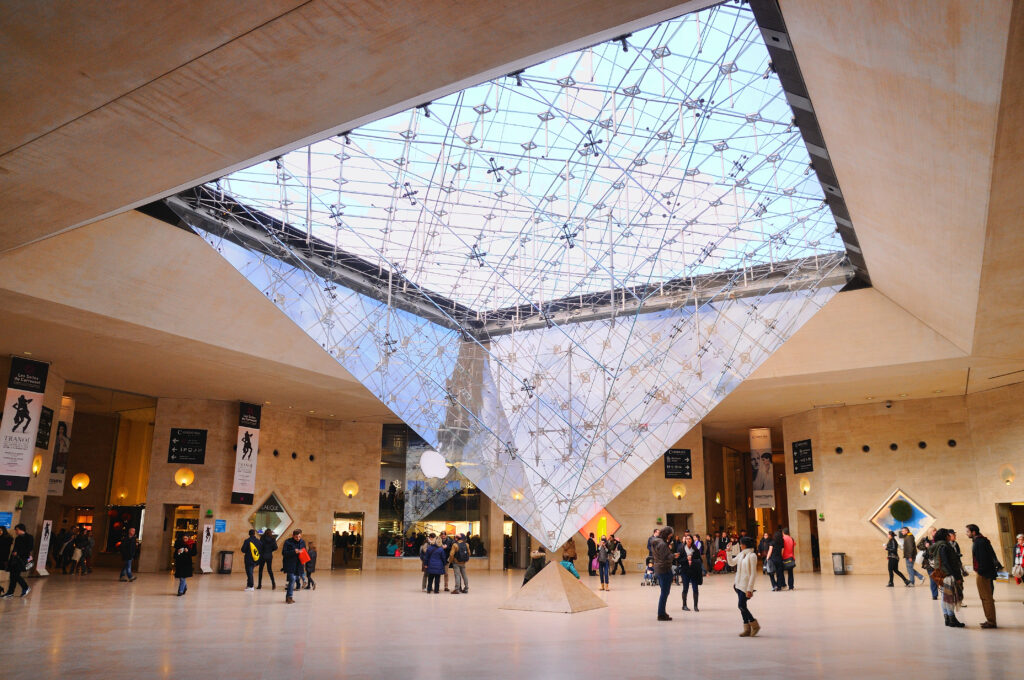
From medieval fortress to Renaissance palace, the Louvre has had many incarnations in its thousand-year history. It has operated as a museum since 1793 and is the permanent home of more than 600,000 historical artefacts and works of art. Visitors flock here to marvel at the Venus de Milo, admire Gericault’s Raft of the Medusa, or gaze into the eyes of the enigmatic Mona Lisa.
Whatever your artistic tastes, you’re sure to find something to enjoy in this spectacular Parisian landmark, one of the most famous French locations for culture vultures.
Read More: Your Complete Paris Itinerary
VERDON GORGE – PROVENCE
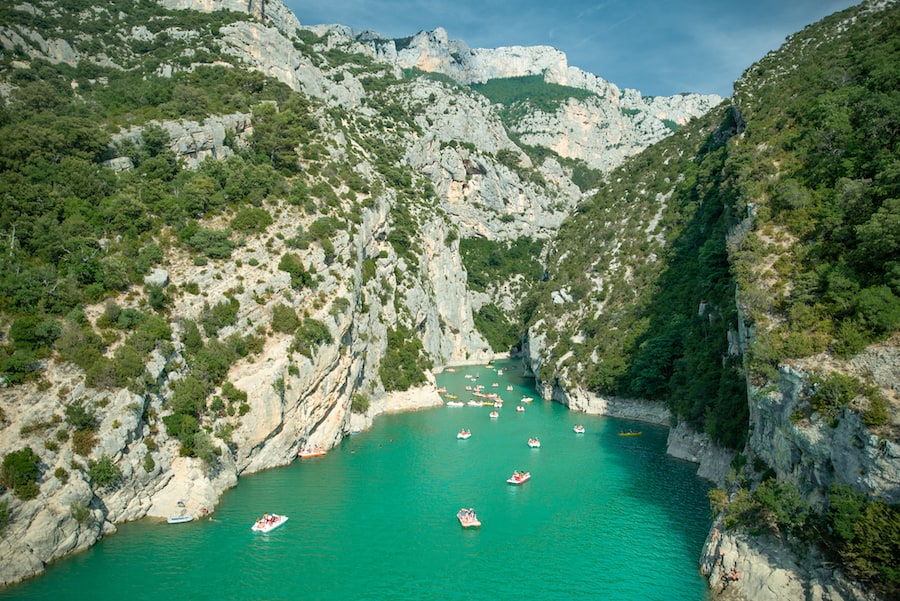
The deepest canyon in Europe, the Verdon Gorge is a striking place of natural beauty in Provence. Spanning 50km, the steep ravine cuts through a mountainous landscape encompassing two departments – from Alpes de Haute Provence to the Var. The Verdon River flows at his heels and opens up into the Sainte-Croix lake.
To truly appreciate the grandeur, take a drive along the route that follows the gorge from Castellane to Sainte-Croix, stopping at the Point Sublime lookout as you go. Alternatively, you can strap on your hiking shoes and follow the Martel trail through the gorge for an up-close appreciation of the wild landscape.
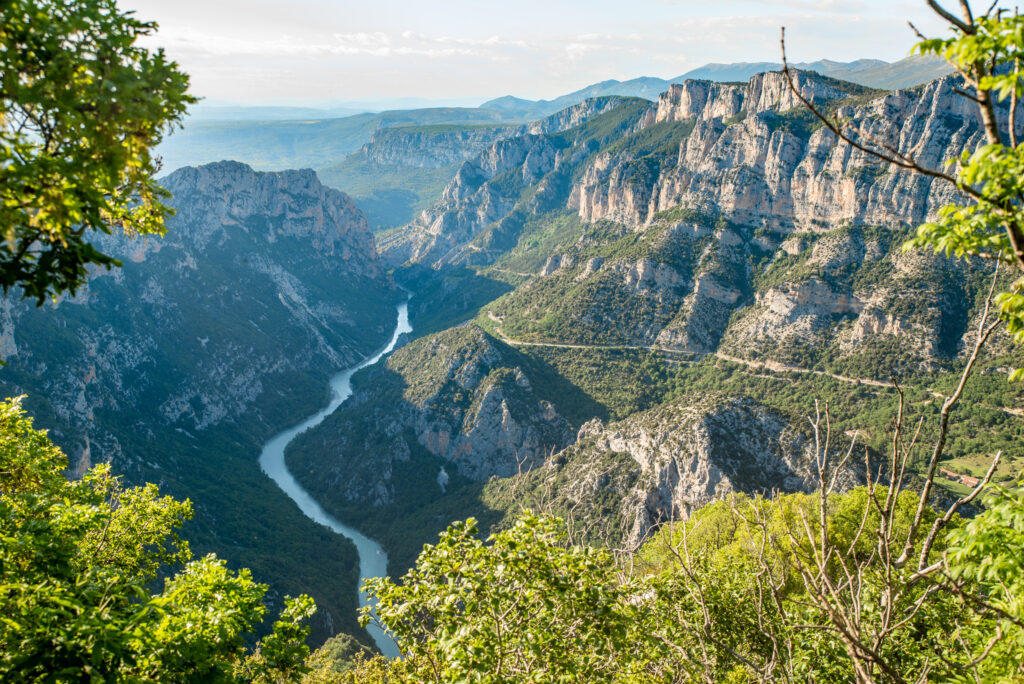
For a fun way to experience the gorge, rent a kayak, pedal boat, or electric boat from the vendors on the Lac de Sainte-Croix and spend a few hours paddling up the river and around the lake. Access via boat is restricted to just the first 2.5km of the gorge, but it’s enough to enjoy the magnificent surroundings.
CANAL DU MIDI – OCCITANIE
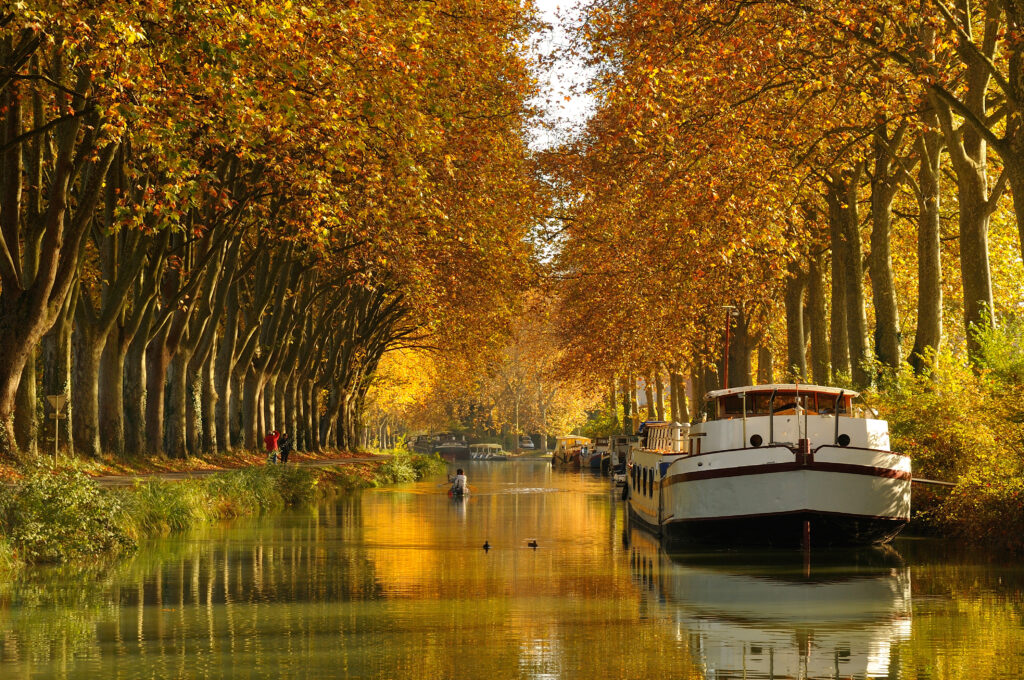
The Canal du Midi is another impressive feat of French engineering, this time born out of an ambitious project conceived by Louis XIV. Intent on connecting the Mediterranean with the Atlantic in order to reinvigorate the French wine trade whilst also avoiding the pirates that plagued the Mediterranean coast, Louis employed the services of Languedoc farmer and mathematical genius, Pierre-Paul Riquet.
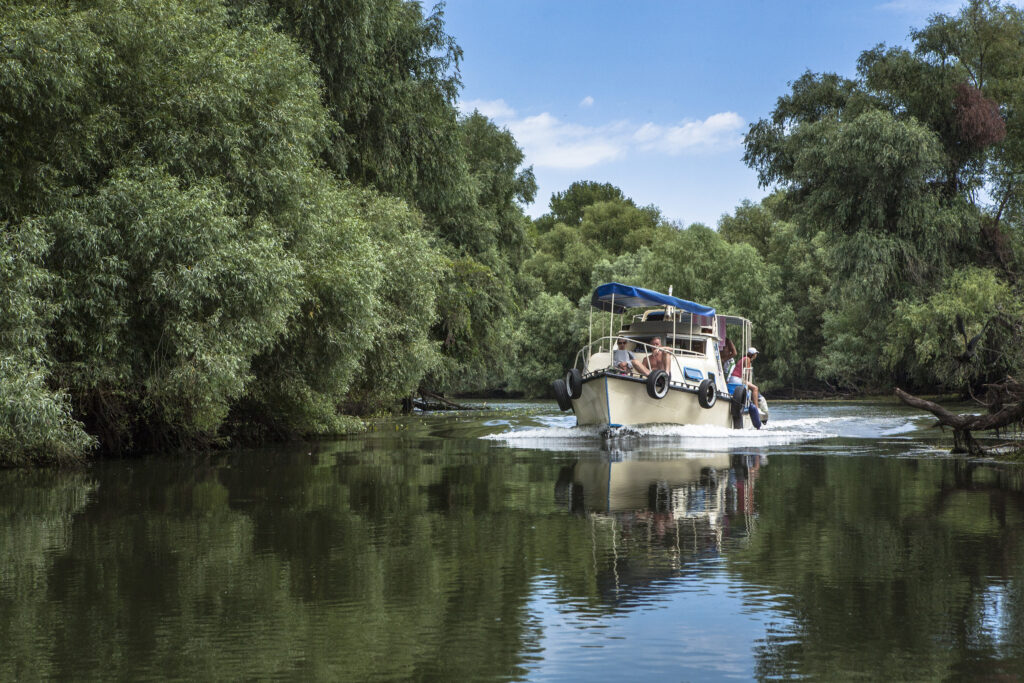
The first part of the project, now known as the Canal du Midi, took almost 20 years to complete, employed the services of 12,000 men and women, and traversed the difficult territory using an elaborate system of dams, bridges, tunnels and locks.
Today, this former trading route operates as a pleasure canal, attracting holidaymakers who walk and cycle along the towpath or hire a boat to admire the views from the water. The 241km route between Toulouse and Sète passes through some of the prettiest scenery in the region.
NÎMES ARENA – OCCITANIE
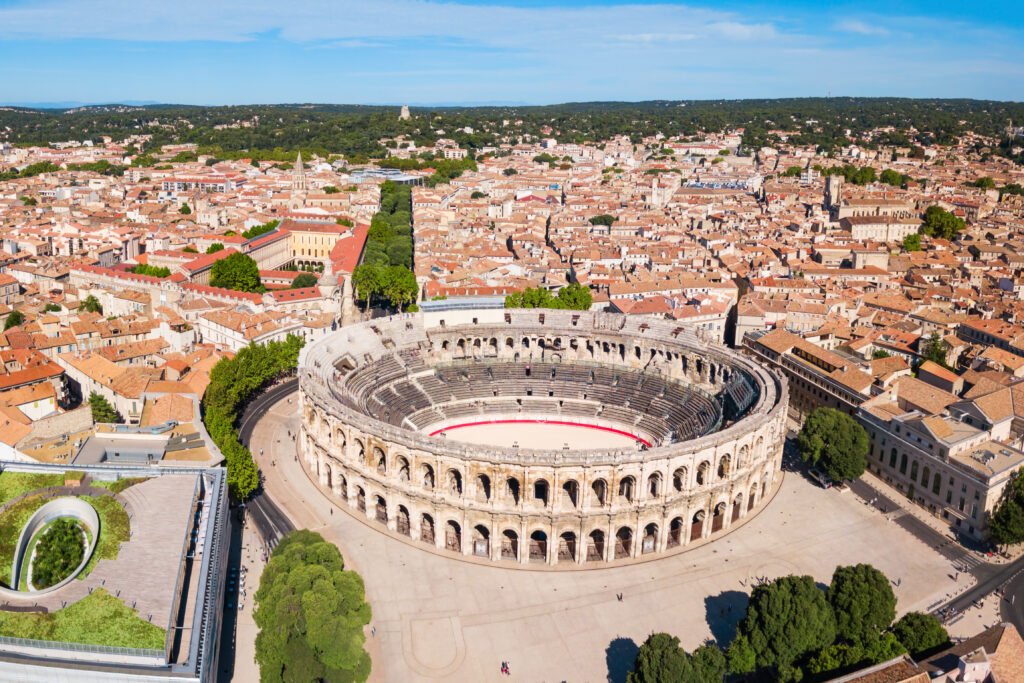
Forget Rome’s Colosseum – the Arena of Nîmes is one of the best-preserved and famous French monuments of its kind. Once the epicentre of the city’s entertainment scene, the Nîmes Arena could seat over 24,000 spectators, who came to watch gladiatorial combat, games and even public executions! Such gory spectacles are off the agenda today, but the arena still sometimes holds classical concerts and sporting events.
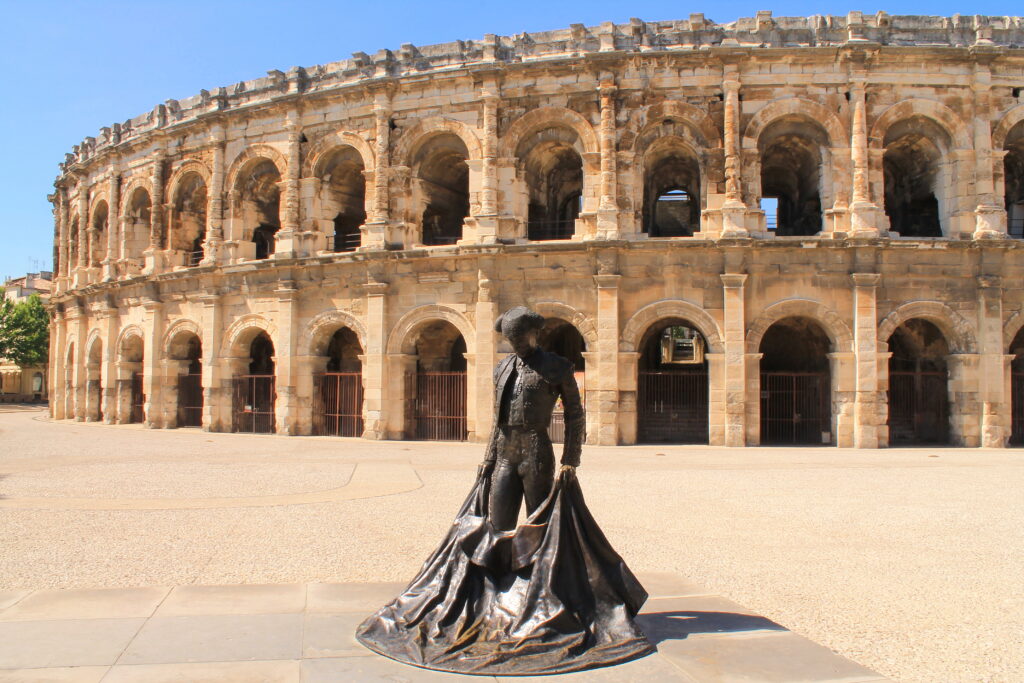
The Nîmes Arena may not be the largest amphitheatre to survive from the Roman world, but the extent of its preservation is remarkable. Around 60 delicate arches support two tiers, allowing access to 34 terraces of seating via interior tunnels and galleries.
This is one of the most fun French landmarks for kids, who will enjoy hearing gruesome stories about fearless gladiators, and the excellent interactive audio guides bring this ancient space to life.
ARC DE TRIOMPHE – PARIS
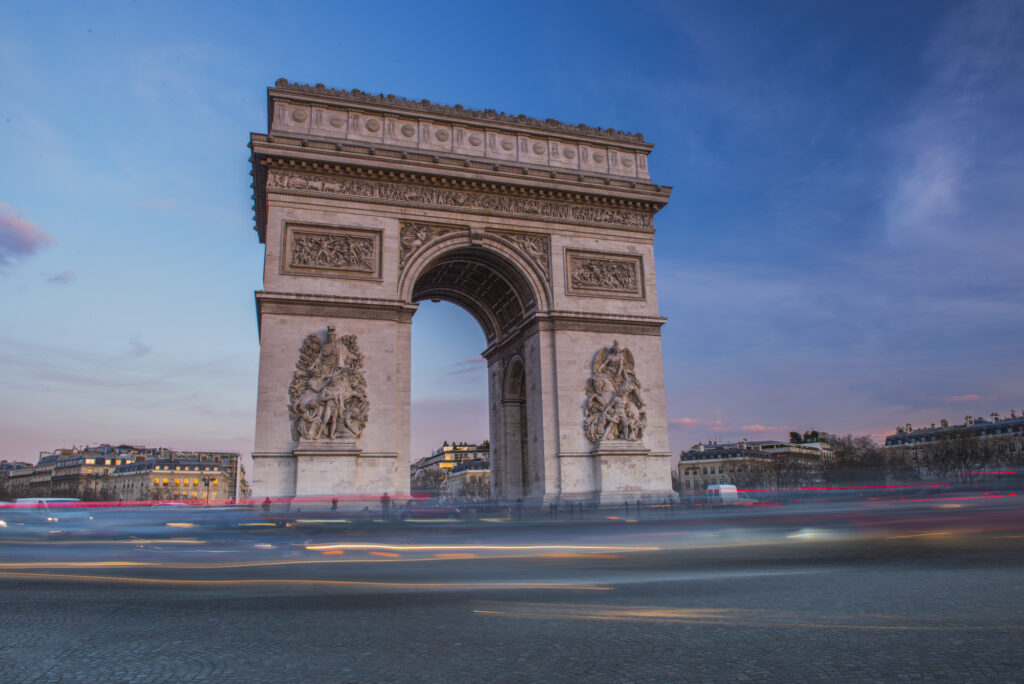
Standing proudly at the western end of the Champs Élysées, the Arc du Triomphe is one of the most famous landmarks in Europe. Originally constructed to commemorate the soldiers who fought and died in France’s Revolutionary and Napoleonic wars, this magnificent Neoclassical arch has inspired similar monuments all over the world. Today, it stands at the heart of Paris as a powerful symbol of the French Republic.
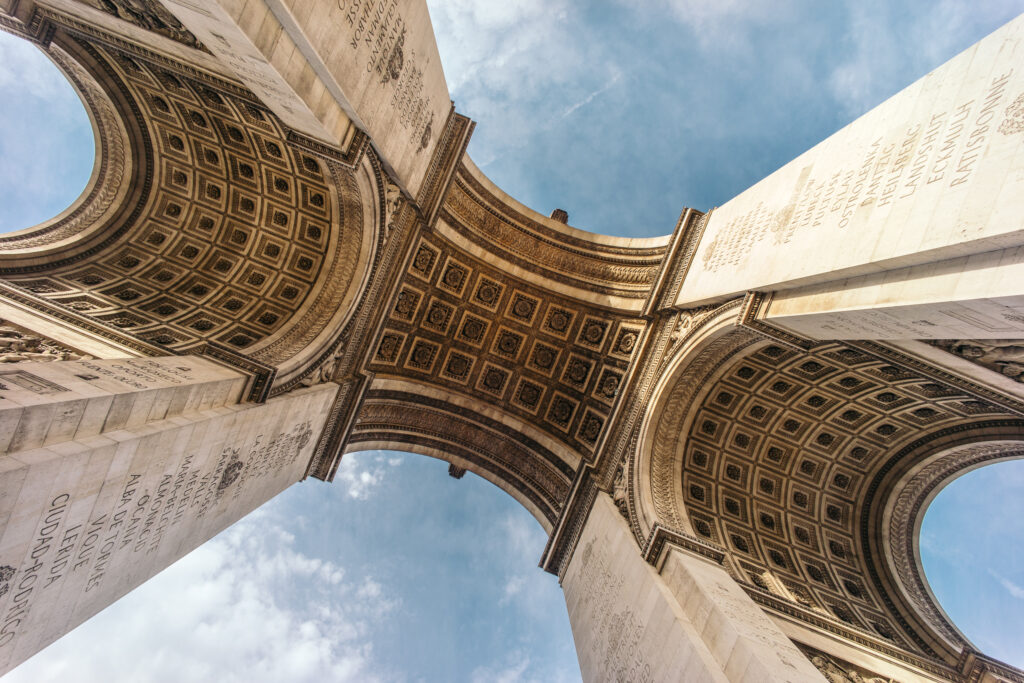
The Arc de Triomphe was commissioned by Napoleon in 1806, and contains an eternal flame, which was lit in 1923 and has been burning ever since. Adorned with intricate sculptures that represent France’s military victories, the arch is a symbol of French pride, and one of the finest man made landmarks in France. In 1919, fighter pilot Charles Godefroy flew his plane right through the arch to mark the end of World War One, a daredevil stunt that was captured on film by his friend, the journalist Jacques Mortane.
Today, visitors can climb the 280 stairs to the top and enjoy a spectacular view over Paris, or admire the beautiful sculptures from the base.
REIMS CATHEDRAL – MARNE
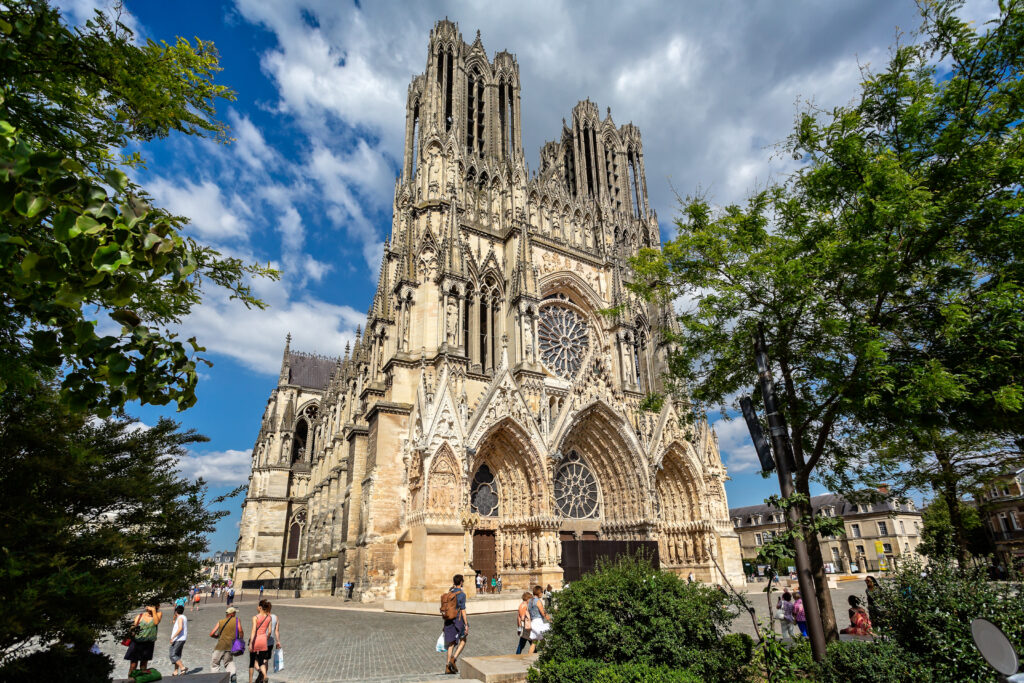
France has no shortage of lavish churches and cathedrals, many of them built in an opulent Gothic style. However, the glorious cathedral of Reims is particularly special – a technical masterpiece and one of the major landmarks in France.
Built in the 12th century over a much older holy site, Reims cathedral boasts spectacular stained glass windows, a towering, intricately carved façade, and a wooden 15th-century astronomical clock. This marvellous monument is packed with treasures, and known for its close association with Joan of Arc, who is depicted in full armour in a sculpture inside the church.
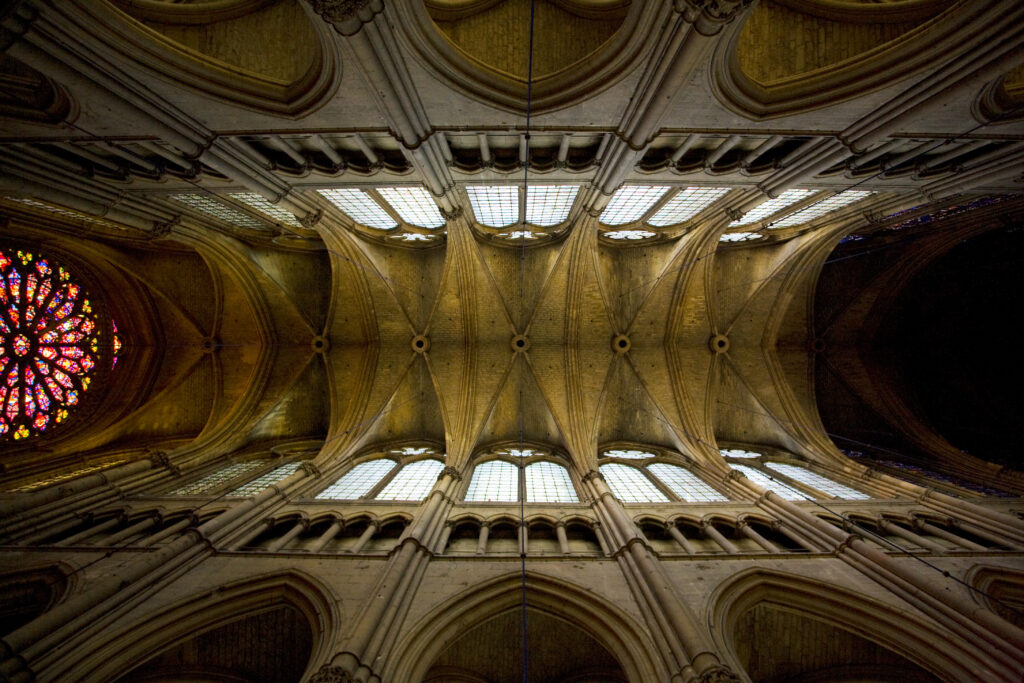
Reims was the traditional spot for the coronation of French monarchs – over twenty kings of France were invested here, in lavish ceremonies that held a deep religious significance. Joan of Arc was present at the coronation of Charles VII in 1429, after successfully defeating the English and taking the city for the French.
The cathedral is steeped in French history, and a visit here is a wonderful opportunity to dig deeper into the country’s past, as well as admire one of its finest pieces of religious architecture.
LASCAUX – DORDOGNE
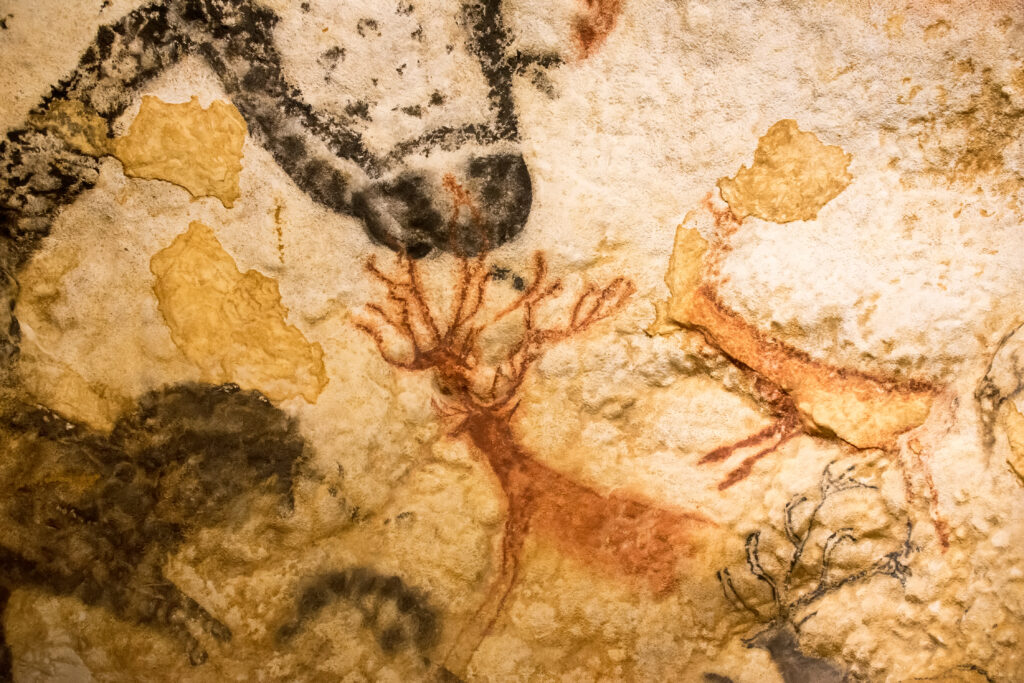
The story of France is, in part, also about the story of human origins, as many of the earliest surviving traces of human life have been found in the south of the country.
A series of incredible cave paintings adorn the walls of an underground grotto near Montignac, in the Dordogne region, comprising 600 individual images including depictions of people, animals and plants. The meaning and origins of these astounding works of art is still the subject of debate, but they are thought to be around 17,000 years old, making them an incredible resource for understanding the earliest origins of human society.
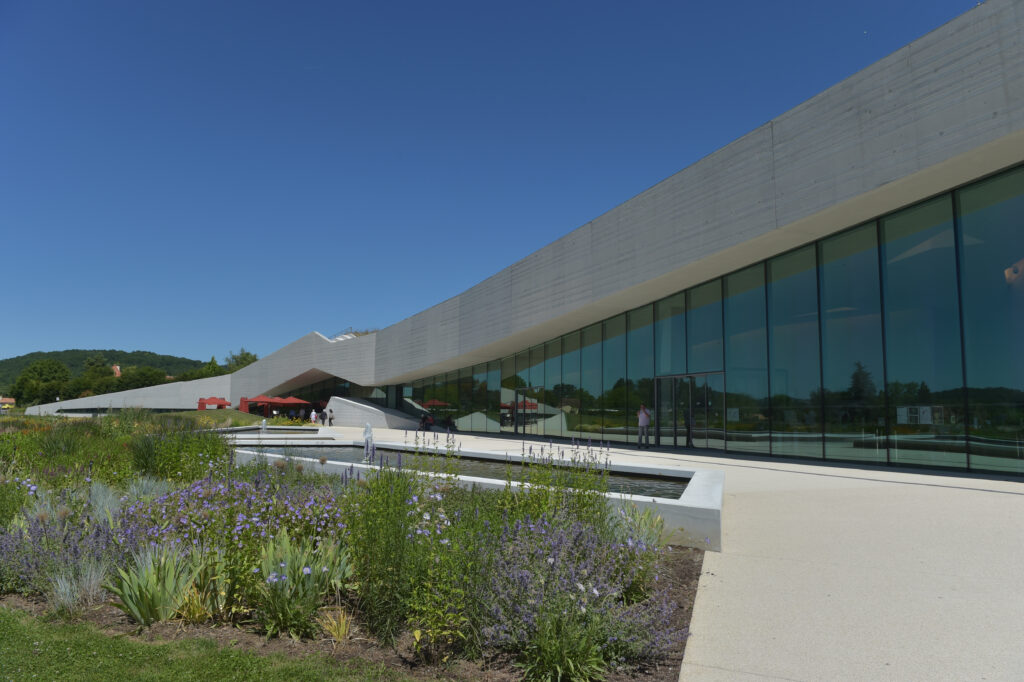
The paintings were discovered by in 1940 by a group of young boys who were searching for a lost dog. Before this, the caves had been sealed for millennia, miraculously preserving the images in unique climatic conditions.
To protect the delicate images it’s no longer possible to enter the original cave, but visitors can enjoy a state-of-the-art reproduction that recreates the experience of walking through the caves and gives unprecedented access to replicas of all of the paintings. This must-see attraction is one of the most impressive and most famous European landmarks.
MONT BLANC – HAUTE-SAVOIE
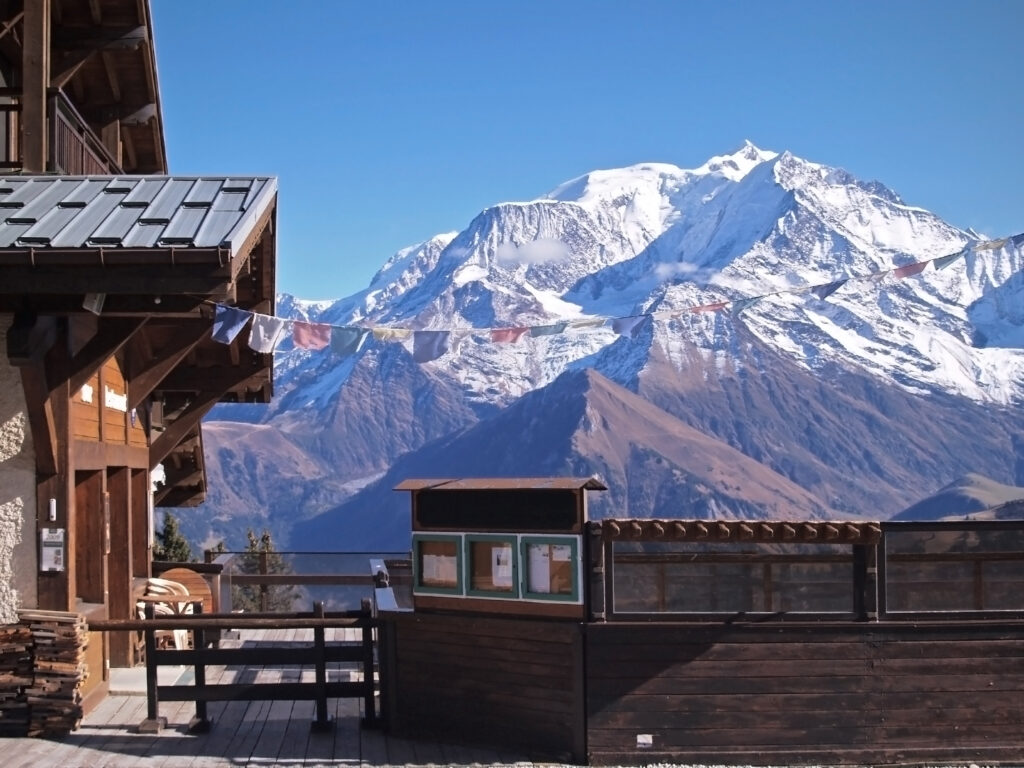
When it comes to natural sites, one of the most famous European landmarks is Mont Blanc, the tallest mountain in Western Europe and a dominant symbol of the Alps. Rising 4808m high, this majestic ‘white mountain’, with its distinctive peak, has long attracted daring climbers. The Mont Blanc massif spans France, Italy and Switzerland, and is the heart of the European mountaineering community.
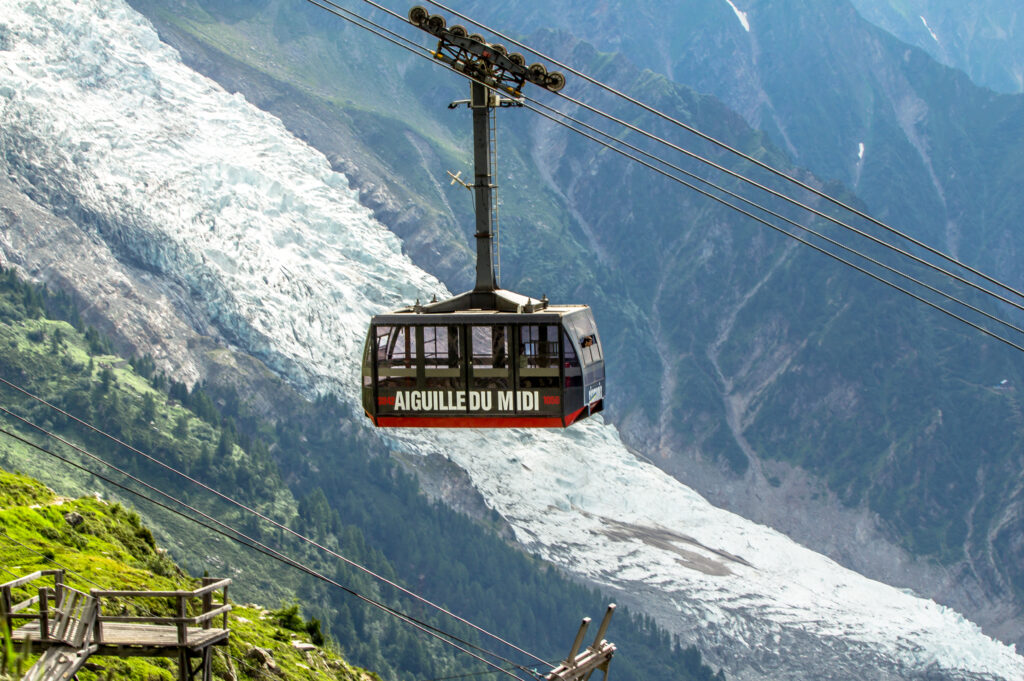
Although it’s possible to scale Mont Blanc without extensive mountaineering experience, this feat shouldn’t be undertaken lightly. The mountain claims lives every year, and getting to the top is a major test of strength and stamina.
The good news is, it’s possible to admire the peak from easier hiking routes all around the Mont Blanc massif. Take the cable car from Chamonix up to the Aiguille du Midi for a sweeping panorama over this magnificent mountain range, without even breaking a sweat!
CAMARGUE SALT MARSHES – PROVENCE/OCCITANIE
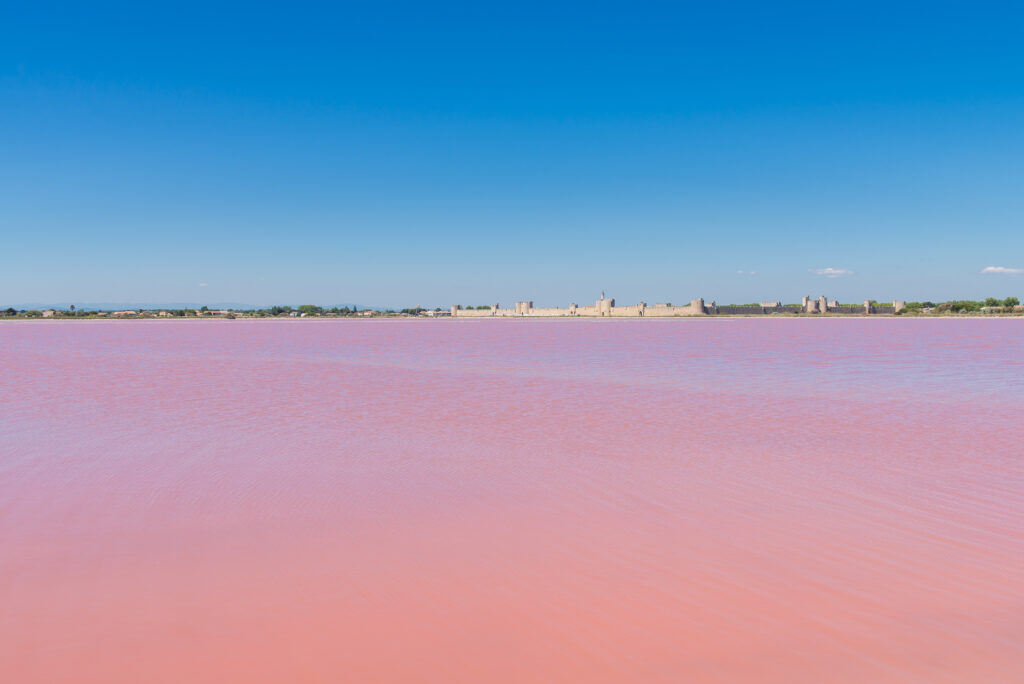
The Camargue is one of France’s most distinctive and enigmatic regions – a protected wetland on the Mediterranean coast known for its white horses, incredible birdlife, and dazzling pink salt marshes.
The Salins d’Aigues-Mortes, a series of lakes that produce 500,000 tonnes of salt each year, form an incredible spectacle, given their intense pink hue by tiny microorganisms in the water.

The unique habitat found in the Camargue sustains a wide variety of birdlife, including flamingos, which love to graze on the pink algae found in the lakes! This natural French landmark is one of a kind, and a wonderful place for a hiking, cycling or horse-riding trip. One of the most famous landscapes in France, the Camargue provides a dazzling display of nature at its best.
SAINTE-CHAPELLE – PARIS
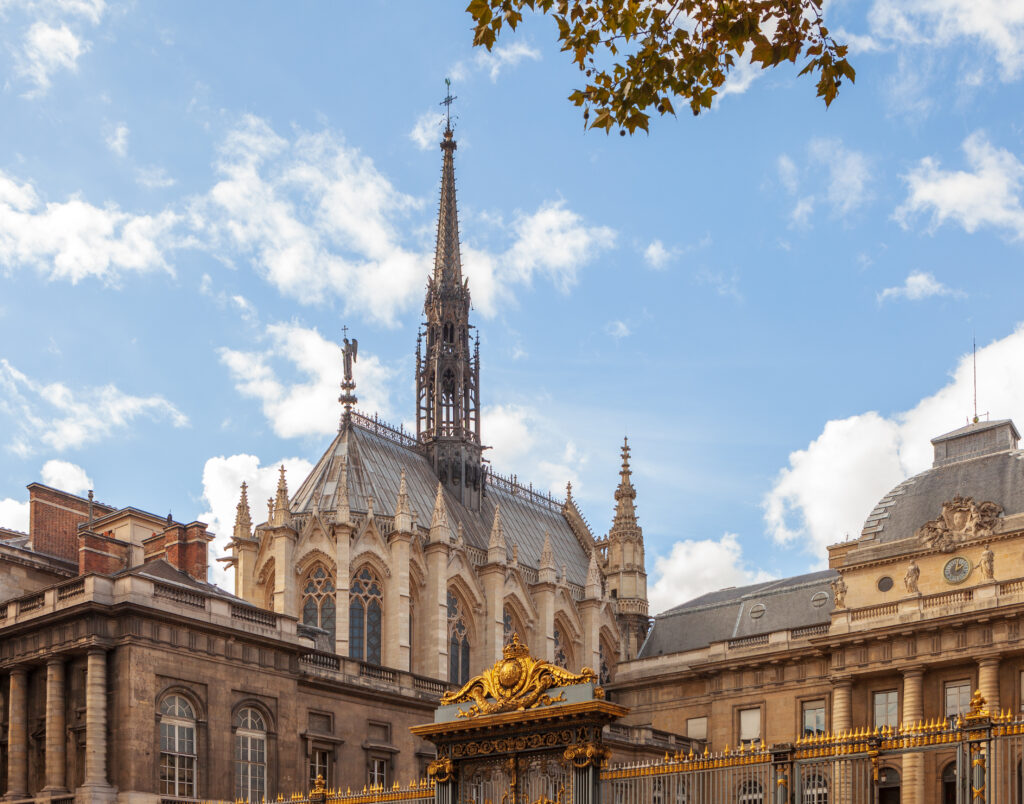
Although it might be less famous than its iconic neighbour, the Notre-Dame, the Sainte-Chapelle (Holy Chapel) is possibly one of the most beautiful churches in France.
Located on the Île de la Cité in the heart of Paris, the chapel was the brainchild of the French king Louis IX, who was later made a saint for his pious activities. Louis envisaged a beautiful chapel to hold his impressive collection of holy relics (including the Crown of Thorns!) – only the best would do.
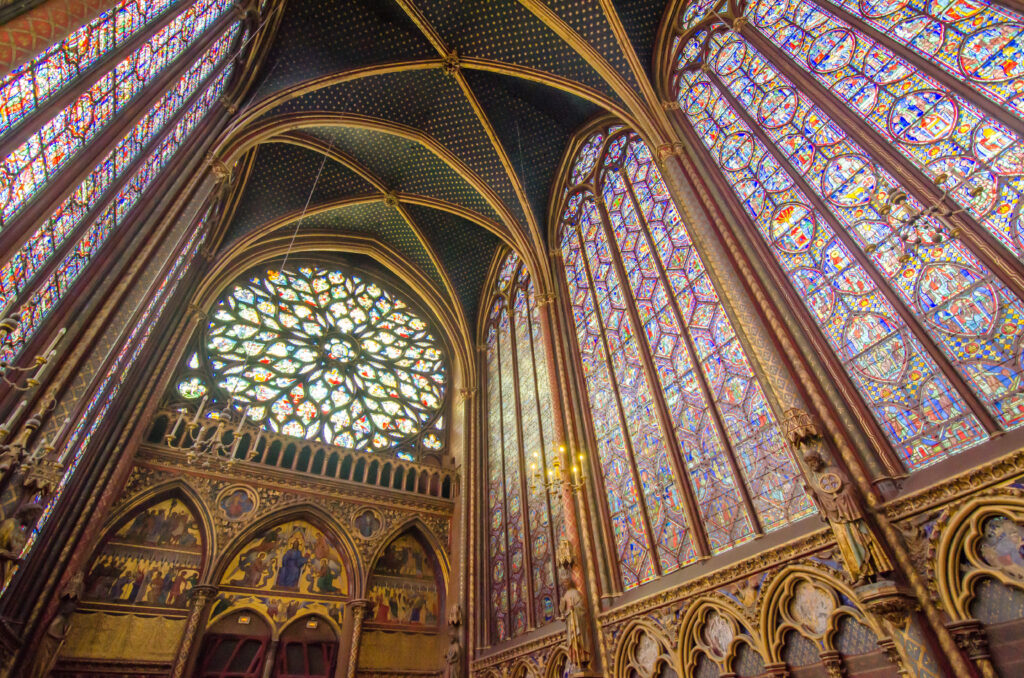
The Sainte-Chapelle is a Gothic masterpiece, known particularly for its magnificent stained glass windows. These carefully crafted panels recreate Biblical scenes and were created using the finest materials and techniques available in the 13th century.
The best time to visit is on a sunny day, when the chapel is flooded with coloured lights that stream through the painted windows. This beautiful church is an architectural marvel, and one of the most popular landmarks in France.
PALAIS DES PAPES – PROVENCE
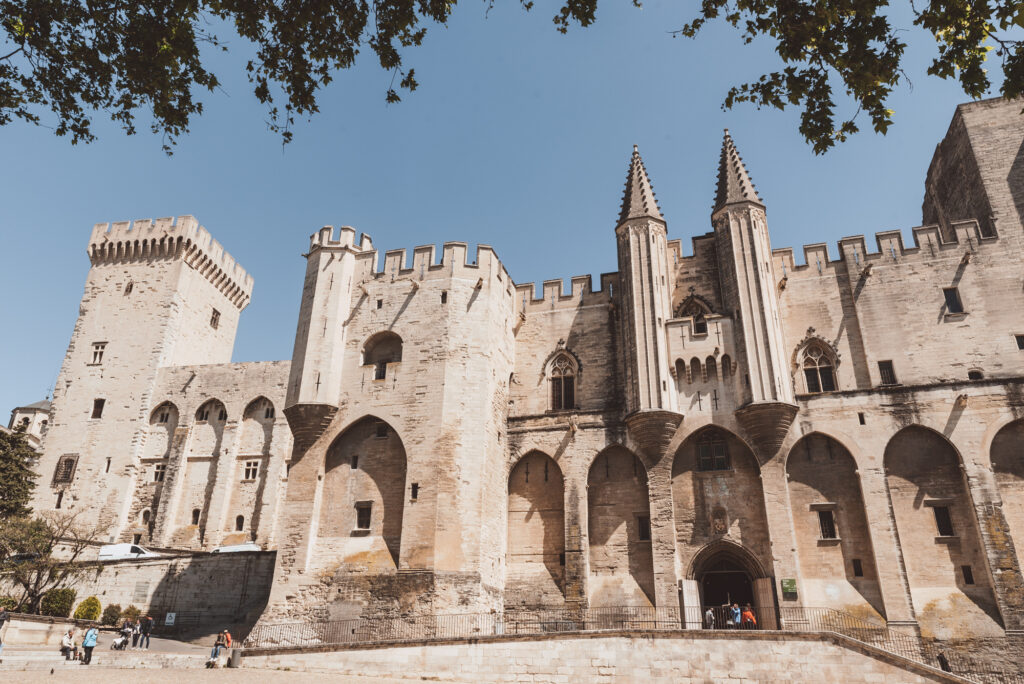
It’s easy to forget that, for almost 70 years in the 14th century, France was the epicentre of papal politics, when discord and schism in Rome led a series of popes to establish their base at Avignon. Although the papacy eventually did return to the seat of Saint Peter, they left their mark in the south of France, in the shape of a fabulous complex of palaces.
In the 14th century, this remarkable set of buildings was a hotbed of political intrigue, philosophy, science and culture, providing the setting for one of the most fascinating and turbulent periods in French history.
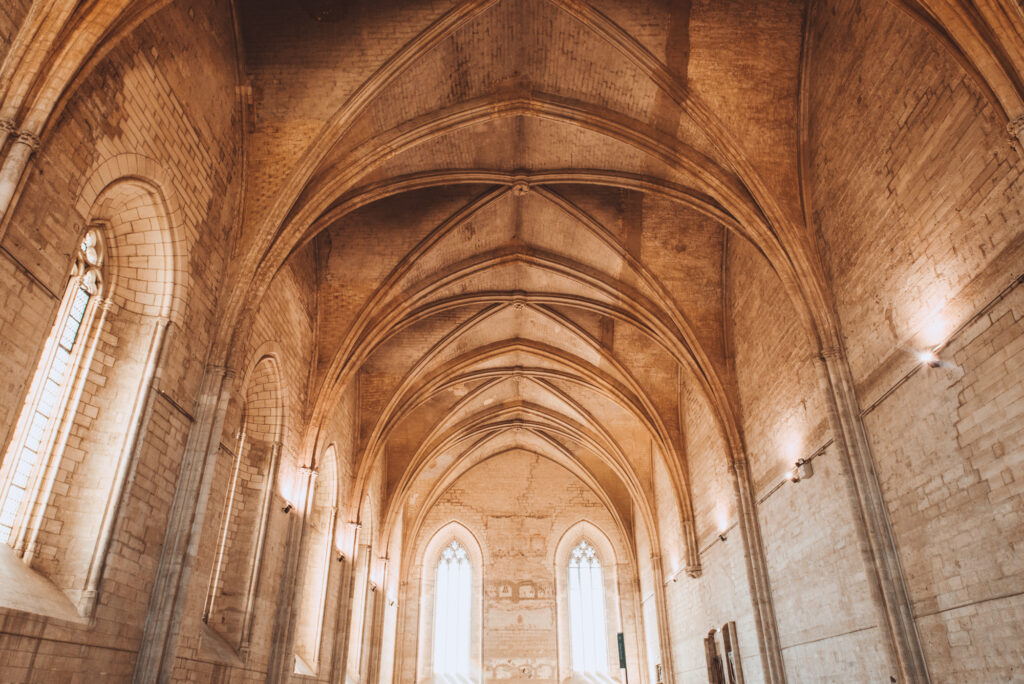
A trip to Avignon is a must for history buffs and lovers of architecture, but all visitors will enjoy the medieval monuments, lavish palaces and charming ambience of this small town. The Papal Palace of Avignon is famous French architecture at its very finest.
CARNAC – BRITTANY
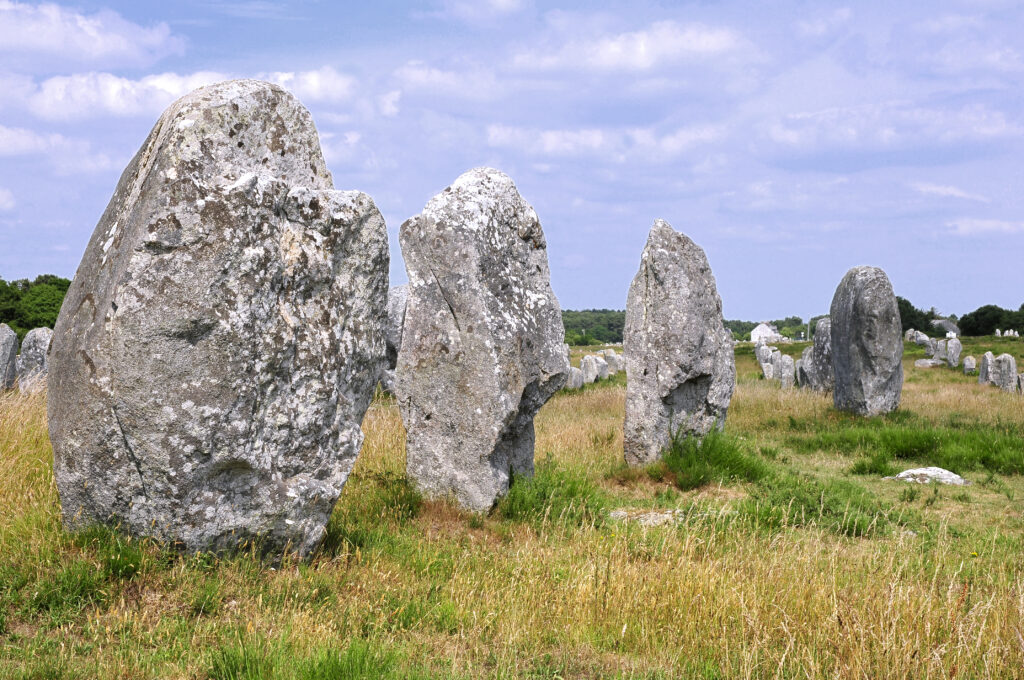
With rows and rows of ancient monoliths, arranged in mysterious patterns, the prehistoric site at Carnac in Brittany, has long puzzled historians and archaeologists. Why did the Neolithic peoples of the peninsula work so hard to drag these colossal stones, weighing up to 300 tonnes each, into such specific arrangements?
Historians have suggested that the site was constructed for a spiritual purpose, or potentially as some form of a vast open-air market. Local legend claims that the stones are the remnants of a Roman legion, immobilised by the sorcerer Merlin. There are plenty of wild and wonderful theories, but to date, the stones of Carnac remain a mystery.
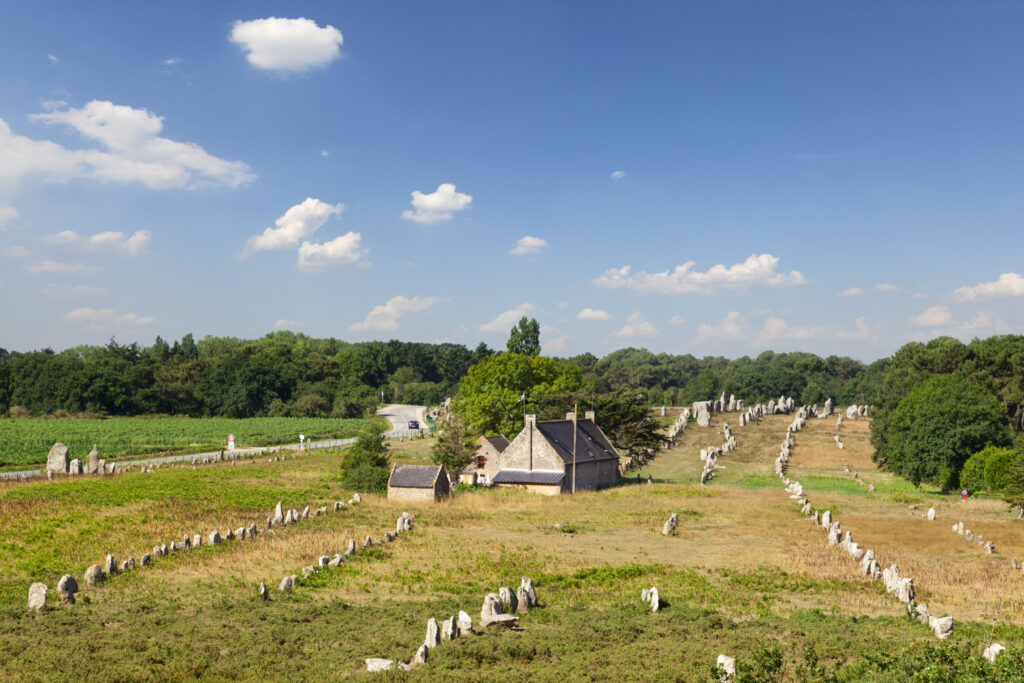
Whatever the case, Carnac is a beautiful, enigmatic site and one of the most famous sites in France. There are over 3000 individual standing stones, or menhirs, thought to date between 4500BC and 3300BC. The excellent visitor centre close to the site provides a fascinating description of the stones and their discovery, with plenty of interactive exhibits for kids.
Visit this famous French landmark and trace the footsteps of our ancestors who walked the land long ago.
POMPIDOU CENTRE – PARIS
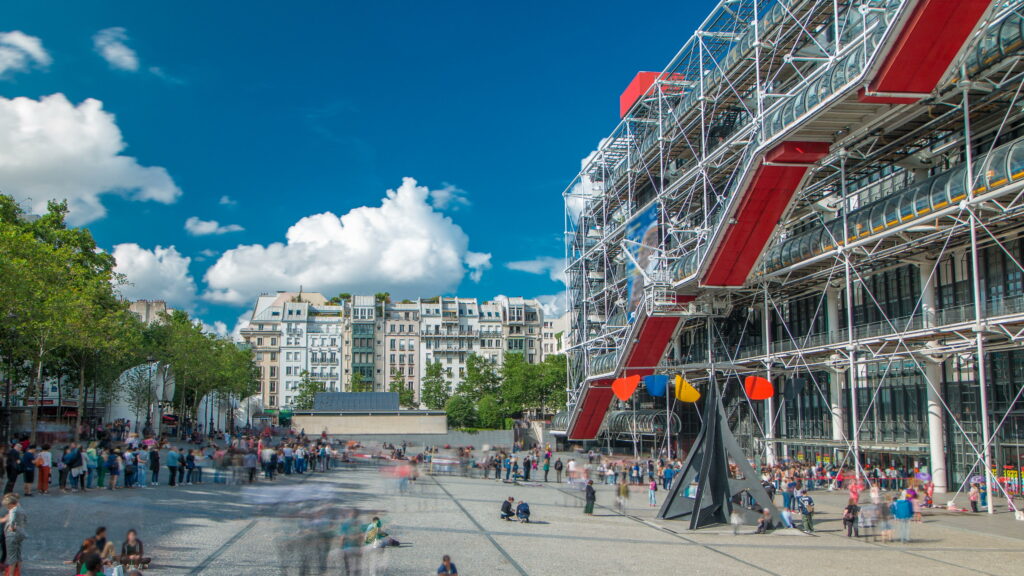
Not all of France’s famous landmarks are quite so ancient, and perhaps the most famous modern monument is the weird and wonderful Pompidou Centre in Paris.
Constructed in the 1970s by previously unknown architects Richard Rogers and Renzo Piano, the Pompidou Centre is known for its bizarre ‘inside out’ design. With exterior escalators snaking up the façade, bright coloured tubing, glass walls and an industrial aesthetic, the Pompidou does not sit easily with the rest of Paris’ traditional, monochromatic design.
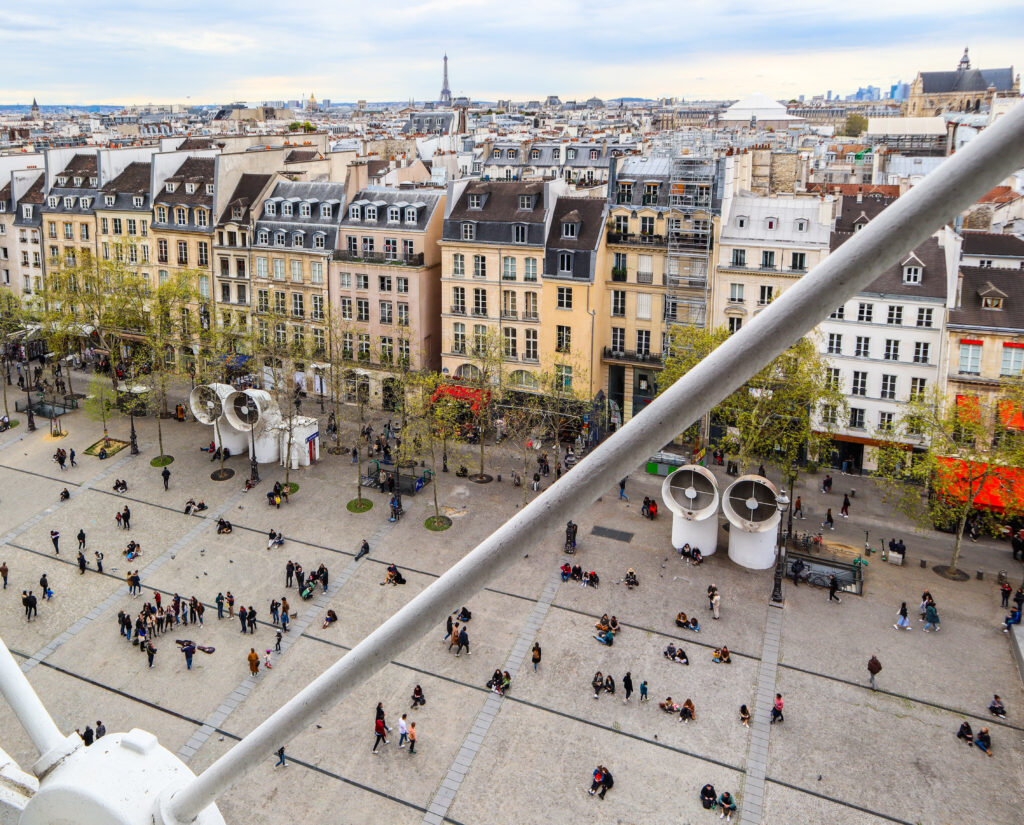
Inside you’ll find restaurants, cafes, a library and gallery space, making this an important cultural and artistic hub in the heart of the city. Challenging assumptions, breaking with tradition, and ever-changing, the Pompidou is a landmark that bears witness to France’s vitality and highlights the incredible art scene of its capital city.
GORGES DU TARN – OCCITANIE
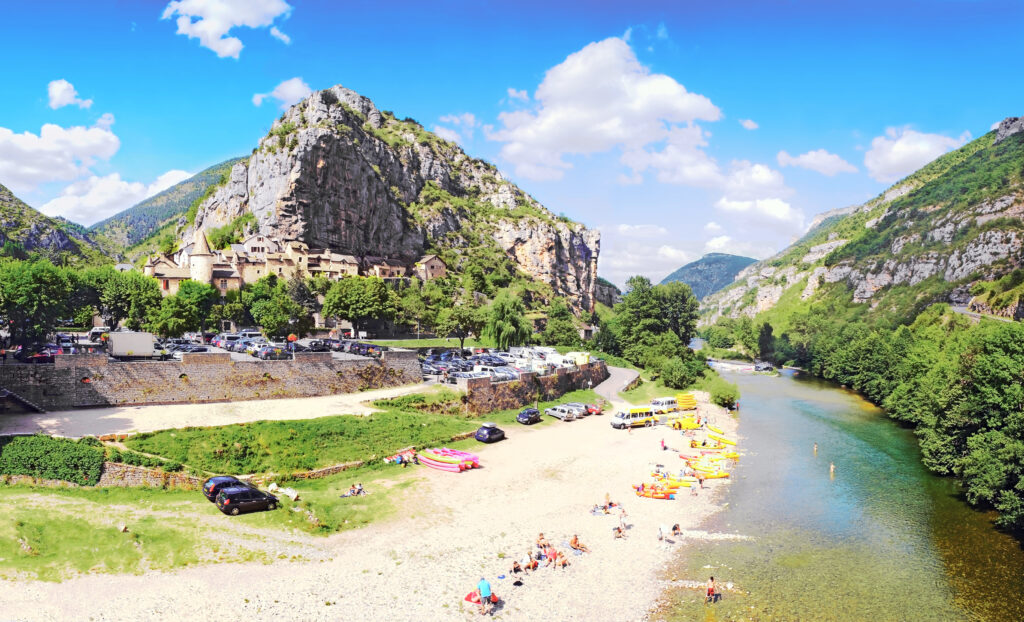
This plunging canyon, created by the fast-flowing River Tarn, is one of the most picturesque and dramatic natural landmarks in France. With turquoise waters, towering cliffs, soaring vultures, and unusual rock formations, the Gorges du Tarn is sure to take your breath away. Stretching for 53km, and rising to a height of 600m in some places, this epic gorge is a dramatic piece of natural sculpture.
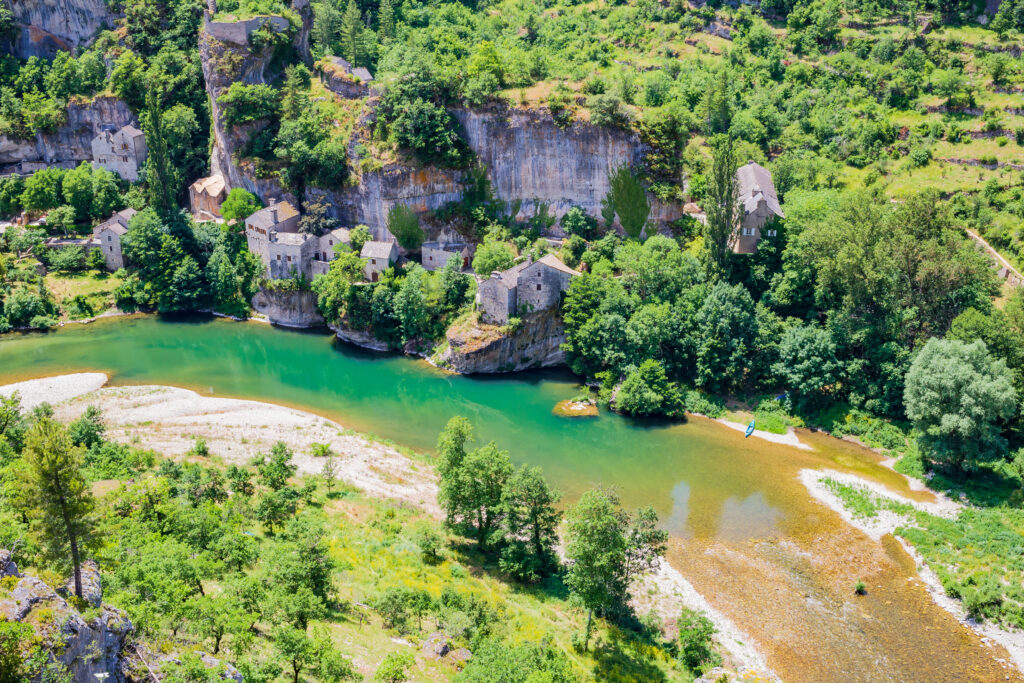
The Gorges du Tarn is a fantastic place for a family holiday, with plenty of outdoor activities on offer. Whether you choose horse riding, mountain biking, or hiking, or get your feet wet in the icy river on a canyoning or canoeing expedition, you won’t be short of possibilities for outdoor adventure.
SACRE-COEUR – PARIS
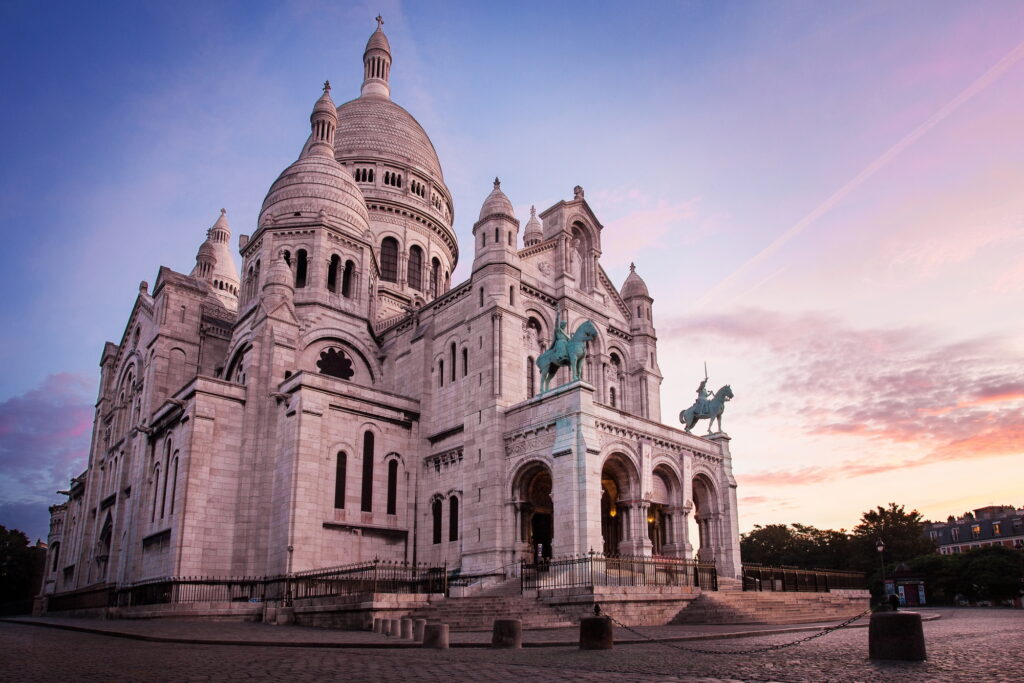
The Basilica of the Sacred Heart of Paris, more commonly known as the Sacré-Coeur, stands at the summit of the Butte Montmartre, the highest point in the capital.
It might lack the Gothic charm of Notre Dame or Sainte-Chapelle, but this glistening white church occupies a special place in the hearts of visitors and locals alike. Millions make the trip up the steps of Montmartre to visit the church every year, walking in the footsteps of pilgrims that trod the same path centuries ago.
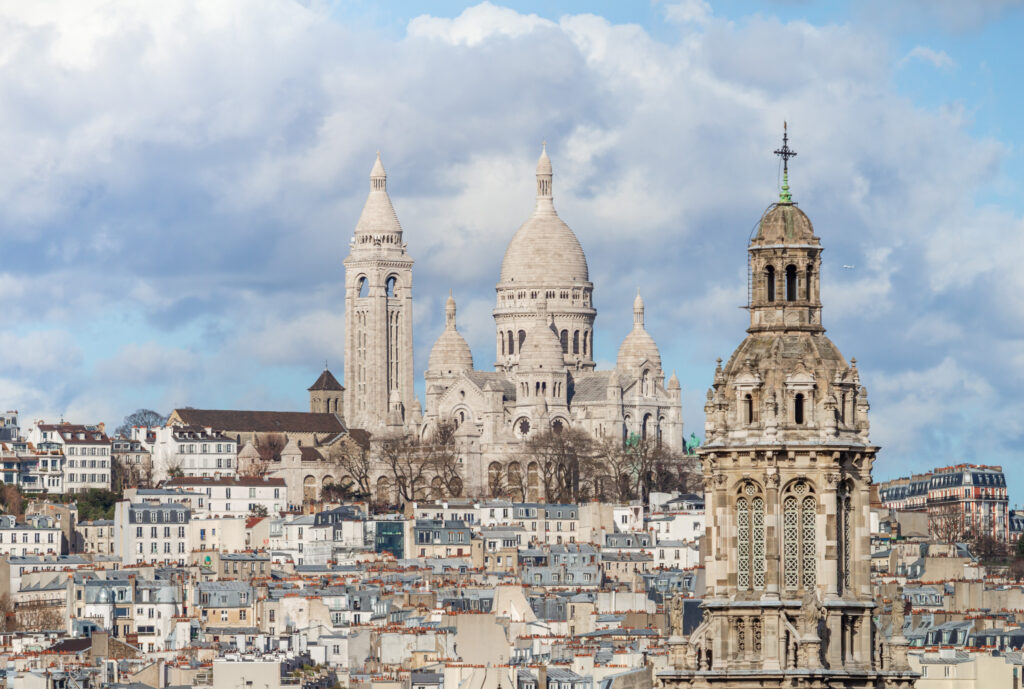
The Sacré-Coeur makes a great spot to look out on some of the other famous landmarks in Paris. On a clear day, you can catch a glimpse of the Eiffel Tower, Montparnasse and Notre Dame from the peak. The beating heart of Montmartre, the Sacré-Coeur is a must on any Paris itinerary.
I hope this list of major landmarks in France has given you plenty of ideas for your next trip to l’hexagone. France is a treasure trove of incredible monuments and natural landmarks – the only problem you’ll have is deciding where to go first!
